





United We Stand

Simchat Smuel
Rabbi Sam Shor Page 46
The Power of a Group
Ayelet Glatt - Shagririm Balev Page 78











Simchat Smuel
Rabbi Sam Shor Page 46
The Power of a Group
Ayelet Glatt - Shagririm Balev Page 78



Dear Torah Tidbits
Rabbi
Steps Towards Geulah
Rabbi Moshe Hauer
Aliya-by-Aliya Sedra Summary
Rabbi Reuven Tradburks
A Special Spirituality
Rabbi Dr. Tzvi Hersh Weinreb
An Important Message; Easily Missed
Rabbi Shmuel Goldin
Encampments & Journeys
Rabbi Lord Jonathan Sacks zt"l
Probing the Prophets
Rabbi Nachman Winkler
Collective Construction
Rabbi Shalom Rosner
Blessings
Rebbetzin Shira Smiles
The Main Thing
Rabbi Judah Mischel
The Laws of Chadash – Chutz La’aretz
Rabbi Ezra Friedman
Simchat Shmuel
Rabbi Sam Shor
The Deposit
Rabbi Moshe Taragin
Parshat HaChodesh: Karbanot –Drawing Near, Moving Forward
Rebbetzin Dr. Adina Shmidman
Kiddush HaChodesh: Lessons as a Nation and as Parents
Rebbetzin Zemira Ozarowski
Sitting at Rav Kook’s Seder - Part 2
Rabbi Aaron Goldscheider
Taking a Different Object than Lost
Rabbi Daniel Mann
The Halachic Mother
Rabbi Gideon Weitzman
The Power of a Group
Ayelet Glatt - Shagririm Balev
A Legacy of Unity
Sivan Rahav-Meir
The Y-Files Comic Netanel Epstein
JLIC - The Need for Both Shamor and Zachor
Tzvi Wohlgelernter
Daniella Orenbuch & Eli Schwartz
Journeys, Journeys, Journeys
Rabbi Jeffrey Bienenfeld
Rosh Chodesh Nisan is on Sunday March 30
Earliest Kiddush Levana 3 Days After Molad: 4 Nisan/ Tues. night April 1 7 Days After Molad 8 Nisan/ Motzei Shabbat April 5
Last Opportunity to Say Kiddush Levana until 13 Nisan/ Thurs. night April 10
The special reading of Parshat Hachodesh is the maftir this Shabbat (Shemot 12:1-20)
Early on Fri morning March 28 we move clocks ahead one hour. At 2:00am it becomes 3:00am.
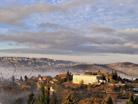
COVER IMAGE Photographed by Batya Medad.
There are many synagogues named after the Holy Tabernacle that had rested in Shiloh for close to 400 years, but this one is truly unique. Not only is it designed like the Tabernacle, it’s located barely a kilometer from where the genuine one had stood. My family moved to Shiloh in Ellul, 5741, 1981 before this synagogue was actually built. After a very long exile, Jews returned to Shiloh in Shvat, three years earlier. The first school in Shiloh opened when we moved here, that September 1. It was very tiny, fewer than twenty children in three grades. Today there are large regional schools in Shiloh up to the 12th grade. My husband and I still live in Shiloh, though our children are in different Israeli locations. The once empty hills are now full of Jewish life, homes and businesses. I’ve been organizing women’s Rosh Chodesh prayers at Tel Shiloh for decades.
Yerushalayim/Maale Adumim
Aza Area (Netivot, Sderot et al)
Beit Shemesh/RBS
Alon Shvut
Raanana/Tel Mond/Herzliya/K.Saba
Be’er Sheva
Ginot Shomron
/ Zichron
Gush Shiloh
Tel Aviv / Givat Shmuel
/ Bikat HaYarden
JERUSALEM
Rabbeinu Tam (Jerusalem): Pekudei - 8:13PM • Vayikra - 8:18PM
All Times According to MyZmanim (20 mins before Sunset in most Cities; 40 mins in Yerushalyim and Petach Tikva; 30 mins in Tzfat and Haifa)
All Times According to MyZmanim (20 mins before Sunset in most Cities; 40 mins in Yerushalyim and Petach Tikva; 30 mins in Tzfat and Haifa)
Coast OU Press Synagogue/Community Services OU Advocacy OU Israel MITCHEL R. AEDER, PRESIDENT OF THE ORTHODOX UNION Yehuda Neuberger, Chairman of the Board, Orthodox Union | Dr. Josh Penn, OU Kashrus Commission
RABBI MOSHE HAUER, EXECUTIVE VICE PRESIDENT | RABBI JOSHUA M. JOSEPH, ED.D. EXECUTIVE VICE PRESIDENT & CHIEF OPERATING OFFICER Rabbi Dr. Tzvi Hersh Weinreb, Exec. V.P. Emeritus OU KOSHER: Rabbi Menachem Genack, CEO/Rabbinic Administrator OU Kosher | Rabbi Moshe Elefant, COO/Executive Rabbinic Coordinator ISRAEL: Rabbi Yissachar Dov Krakowski, Rabbinic Administrator | Rabbi Ezra Friedman, The Gustave and Carol Jacobs Center for Kashrut Education/ Deputy Rabbinic Administrator Headquarters: 40 Rector St. 4th floor, New York, NY 10006 212-563-4000 website: www.ou.org
Editor Emeritus: Phil Chernofsky
Editor: Rabbi Aaron Goldscheider | aarong@ouisrael.org
Advertising: Ita Rochel | 02-5609125 or ttads@ouisrael.org
Website: www.torahtidbits.com Not getting enough TTs? Too many? None at all? Contact our DISTRIBUTION 050-577-2111 • ttdist@ouisrael.org
Ranges 11 days Wednesday - Shabbat
JERUSALEM
March 26 - April 5* / 26 Adar - 7 Nisan
Earliest Tallit and Tefillin 4:44-5:31
Ranges 11 days Wed–Shabbat
Oct x–x / x–x Cheshvan
Sunrise 5:35-6:22
Sof Zman Kriat Shema 8:40-9:32
Magen Avraham 8:03-8:55
Earliest Tallit and Tefillin x:xx–x:xx Sunrise x:xx–x:xx Sof Zman Kriat Shema x:xx–x:xx Magen Avraham x:xx–x:xx
Sof Zman Tefila 9:41-10:35 (According to the Gra and Baal HaTanya)
Sof Zman Tefila x:xx-x:xx
(According to the Gra and Baal HaTanya)
Chatzot (Halachic Noon) 11:45-12:42
Chatzot (Halachic Noon) x:xx–x:xx
Mincha Gedola (Earliest Mincha) 12:15-1:13
Mincha Gedola (Earliest Mincha) x:xx–x:xx
Plag Mincha 4:37-5:42
Plag Mincha x:xx–x:xx
Sunset (Including Elevation) 5:58-7:05
Sunset (Including Elevation) x:xx–x:xx
* Please note: early on Fri morning March 28 we move clocks ahead one hour. At 2:00am it becomes 3:00 am.
Seymour J. Abrams • Orthodox Union Jerusalem World Center • Avrom Silver Jerusalem College for Adults • Wolinetz Family Shul • Makom BaLev • Birthright • Yachad • NCSY in Israel • JLIC in Israel • Camp Dror • Pearl & Harold M. Jacobs ZULA Outreach Center • The Jack Gindi Oraita Program • OU Israel Kashrut
STUART HERSHKOWITZ, PRESIDENT OU ISRAEL Zvi Sand / Yitzchak Fund: Former Presidents, OU Israel | Rabbi Emanuel Quint z”l, Senior Vice President | Prof. Meni Koslowsky, Vice President
VAAD MEMBERS:
Michael Elman | Jonathan Eltes | Yonatan Frankel | Yitzchak Fund | Daniella Hellerstein | Stuart Hershkowitz | Jeremy Lustman | Yigal Marcus | Meir Raskas | Atara Reichel | Zvi Sand | Norman Schmutter | Mark Schneider | Esther Williams
RABBI AVI BERMAN, EXECUTIVE DIRECTOR, OU ISRAEL
David Katz, CFO, OU Israel | Natan Kandler, COO, OU Israel | Chaim Pelzner, Director of Programs, OU Israel | Rabbi Sam Shor, Director, Torah Initiatives, OU Israel | Rabbi Sholom Gold zt"l, Dean, Avrom Silver Jerusalem College for Adults 7 Hartum Street, Jerusalem, 9777507 phone: (02) 560 9100 | fax: (02) 561-7432 email: office@ouisrael.org website: www.ouisrael.org
Founders and initial benefactors of the OU Israel Center: George and Ilse Falk a"h
Torah Tidbits and many of the projects of OU Israel are assisted by grants from THE JERUSALEM MUNICIPALITY

OU Israel, Torah Tidbits does not endorse the political or halachic positions of its editor, columnists or advertisers, nor guarantee the quality of advertised services or products. Nor do we endorse the kashrut of hotels, restaurants, caterers or food products that are advertised in TT (except, of course, those under OU-Israel hashgacha). Any "promises" made in ads are the sole responsibility of the advertisers and not that of OU Israel, the OU Israel Center , Torah Tidbits.

RABBI AVI BERMAN EXECUTIVE DIRECTOR, OU ISRAEL ABERMAN@OUISRAEL.ORG
Rabbi Avi Berman Executive Director, OU Israel
In this week’s parsha, Parshat Pekudei, we learn the final census of how many Jews there were above the age of twenty, by way of the giving of the machatzit hashekel, the half coin. Each individual had a chance to contribute and be counted.
Presently, Jews around the world are in the midst of the World Zionist Congress (WZC) elections, which provides the opportunity to express their voice and be counted among the Jewish people. Israeli citizens have the zechut to vote in Israeli elections, thereby shaping the future of the Jewish people in the Land of Israel. The current World Zionist Congress elections enable Jews around the world to vote and have an impact.
Decades ago, it was established that the future identity of Israel should not be determined just by the residents of the State of Israel, but also by Jews worldwide, since Israel is linked with their destiny as well. The WZC meets every five years to make decisions about Jewish life and Israel, including
May the Torah learned in this issue of Torah Tidbits be
our beloved husband, father, grandfather and great-grandfather
Rabbi Yitzchak Pechman z”l
on his ninth Yahrzeit
Pechman, Perlman & Weinberg Families
allocating billions of dollars in funding. Jews around the world can vote in WZC elections to choose representatives from different Zionist movements and organizations, which influence policies on Israeli society, religious affairs, Jewish education, and various projects in Israel. They also help direct resources from major Zionist institutions, including the WZO, the Jewish Agency, and KKL-JNF.
The people that sit on this committee are built of representatives of Jewish organizations, a certain calculation based on how many members of Knesset each party has, and then representatives of Jews from all over the world.
This is not a call for my Israeli brethren to vote in the WCZ since you can’t if you live in Israel or participated in Israeli elections. Rather I am writing to make you aware of the elections and its impact on the State of Israel and raise a call for action for our readers here in Israel to connect with your friends and family in America and encourage them to vote. A large percentage of all the WZC election votes of the Jews around the world come from American Jewry, and this has a direct impact on the allocation of billions of dollars of funding.
Since October 7th, we have all realized that the Atlantic Ocean is much smaller than what we used to think it is. Hatred and antisemitism are evils that we must battle together. During this challenging time when we are fighting for our very existence and antisemitism is rising we turn to our brothers and
sisters outside of Israel with two requests. First of all, they should daven. Second of all, we ask them to do whatever they possibly can in order to strengthen our soldiers, our citizens, and our social tapestry here in Israel. We are all part of one family and are dependent on each other.
Therefore, I’m asking each and every one of you to please reach out to your relatives in North America. Tell them to take part in these elections, because the elections are helping to determine the future of Israel, and what all of these agencies and organizations will fund.
The WZO, the Jewish Agency, JNF, and others, are bodies that sit with a tremendous amount of funds going towards a lot of different social and religious activities across the country and around the world. If you want to make sure that these funds are going towards values that you prioritize and believe in, it is important that you make sure that our brothers and sisters from overseas are also voicing their opinion.
There are many different parties that are running in these elections. The OU, as we have done in previous elections, is running together with Mizrachi and other religious Zionist organizations. The head of Mizrachi is my dear friend, Rabbi Doron Perez. He unfortunately lost his son Daniel Hy”d on October 7th, but has been speaking, connecting, and inspiring the Jewish people ever since. (Let me take this opportunity to mention that his other son Yonatan was injured in battle, and Baruch Hashem he just became a father. I wish Doron, his wife Shelley, and his whole family, a big mazal tov!).
Rabbi Doron Perez has such a passion and love of the Torah, the Land of Israel, and the people of Israel. He and his colleagues at
Mizrachi inspire so many with that love. Our slate is called the Orthodox Israel Coalition (OIC), and it is slate number five on the ballot. The process is simple. It costs five dollars to register, and then you’re able to vote. If you’re eligible to vote and you’re reading my column, then I encourage you to be counted. This provides an opportunity for Americans to have a voice and share their values. Whether you’re going to vote for the OIC slate, or any slate that you believe in, what you are doing is so important.
So if you, or your loved ones, or friends, or relatives, are residents of the United States of America, and are eligible to vote, please make sure to vote in the coming elections that are happening across the USA right now. The numbers due to October 7th are skyrocketing, and more and more Jews are feeling connected to the Land of Israel, which is such a beautiful thing for the Jewish people. Having each and every one of our friends vote is crucial to make sure that the Jewish people continue being a vibrant, thriving, and
May the Torah learned in this Torah Tidbits
In loving memory of Henny Hirsch z”l on her 11th yartzeit Rosh Chodesh Nissan
The Botzers, Hirschs, Meyers, Grandchildren, Great-grandchildren, Nieces and Nephews, Family and Friends
connected people. Visit voteoic.org to learn more and vote.
As Pesach approaches, we are in the midst of distributing our hot off the press Gustave & Carole Jacobs Center for Kashrut Education Pesach guide. As you start to prepare for Pesach, I encourage you to pick up your copy. This Israel edition Pesach guide is being distributed to shuls all across Israel with Torah Tidbits. A special thanks to Rabbi Ezra Friedman for putting together this practical and informative guide.
Wishing you all a chodesh geula sameach and an uplifting and inspiring Shabbat,

Rabbi Avi Berman
Executive Director, OU Israel aberman@ouisrael.org



American trained Endocrinologist US and Israel Certified
Compassionate Endocrine Care:
• Diabetes
• Weight loss and Obesity
• Thyroid disease / Cancer
• Osteoporosis and Menopause
• Pituitary, parathyroid (calcium) and adrenal disease
• Hypogonadism (low testosterone)





kerenmalki.org 02-567-0602












• 125 Sq Meters
• 25 Sq Meter Succah balcony
•
• Extra Large Master
• 2.5
• Shabbat Elevator
• 2 parking places
• Storage room
• Near Ashkenaz Shuls
Price








OU EXECUTIVE VICE PRESIDENT
Our generation has been blessed with the incredible and miraculous gift of the return to Eretz Yisrael. This is something for which we must be deeply grateful, ever mindful of our being granted the privilege that our ancestors dreamt about and prayed for. Gratitude is, however, only a first step. As with any privilege, we must also consider the resultant mission and responsibilities. What is supposed to be our vision for Eretz Yisrael and Medinat Yisrael, and what role is it to play in our lives? While this question requires consideration from multiple angles, an important element can be derived from our Parsha.
It was clear from the outset that our

redemption from Egypt was intended to bring us to Eretz Yisrael. Tragically, we interrupted that journey through our own failings, delaying our arrival for a generation and preventing Moshe from getting there at all. We did, however, achieve two intermediate goals, each of which also served as a destination point that represented redemption and each of which was achieved within this book of redemption, Exodus, Sefer HaGeulah.
The first goal was Sinai, defined at the very outset of the redemptive process (Shemos 3:12), “when you take the people out of Egypt, they will serve God at this mountain (Sinai).” The second was the temple (Mishkan/Mikdash), itself a representation of Sinai, which upon its completion restored Hashem’s presence to our people (see the closing words of our parsha and Ramban’s introductions to Shemot and Terumah.)
These two destinations represent two core elements of what we as a nation were charged to achieve, the assimilation of Hashem’s truth and wisdom in both thought and action (Sinai), and an active spiritual connection that demonstrates God’s presence in the world (Mikdash). This dual national mission is expressed in Devarim (4:7-8): “For what great nation is there that has a God so close at hand as is Hashem our God whenever we call upon Him (Mikdash)? And what great nation has laws and rules as perfect as all this Torah that I set before you this day (Sinai)?”
These are not destinations separate from
Eretz Yisrael; quite the opposite. Ki mi’tzion teitzei Torah u’dvar Hashem mi’Yerushalayim. “From Zion Torah comes forth and the word of God from Yerushalayim.” (Yeshayahu 2:3) Our presence in the land of Israel is purposeful and true to its mission when it demonstrates both Torah wisdom and genuine spirituality and when it radiates that wisdom to the Jewish world and beyond.
That is the essence of the story of the contemporary return to Zion. Our post-Holocaust revival must be seen for the miracle that it is, the product of the millennia of multiple daily prayers offered by millions of us three times a day and every time we concluded a meal, each and every time asking of Hashem that He not only allow us to continue as a people but that He restore us to Yerushalayim and Yerushalayim to us.
Within that holy land it is our charge and opportunity to live the laws and the values of Torah, its wisdom and understanding, in a way that creates the ideal image of that Torah as a value system for life and a framework for a faithful, true, and just society. Torah is to produce a community of people living with awareness of and gratitude towards their Creator, motivated by the values of caring and compassion and the pursuit of wisdom and truth in theory and in practice.
At this particularly challenging juncture in the story of our return to Zion, we must double down and focus on living our mission: strengthening and deepening our relationship to Hashem through Tefillah and living lives that reflect the truest values of Torah, both as individuals and as a community.

Yitzchak. The Jewish people will be Yitzchak and not Yishmael.


7th Aliya (25:12-18) The generations of Yishmael are enumerated. Yishmael dies. His descendants dwell from Egypt to Assyria. Yishmael’s story is brief. He has numerous and powerful offspring. The brevity and began father’s that his icant the







BY RABBI R av, Beit Knesset
When Avraham addresses the people of Cheit, trying to “Ger V’Toshav Anochi Eimachem” (23:4) “A Stranger and This seems to be a contradiction. If one is a stranger than is no longer a stranger. What did Avraham mean?
The Magid of Dubno (Jacob ben Wolf Kranz 1741-1804) this tense situation in order to, both, state his truth and be said, on the one hand, “I am a Resident’ due to G-d’s promise need your agreement to purchase a plot. In other words, Avraham “strangers”, while they understood him as saying that “they”

The peace was kept, and Avraham remained true to his Shabbat Shalom

BY RABBI CHANOCH YERES RAV, BEIT KNESSET BEIT YISRAEL, YEMIN MOSHE
“For the cloud of G-d was upon the Tabernacle by day, and fire used to be on it by night, before the eyes of all the house of Israel, throughout their journeys.” (40:38)
Rashi (1040-1105) explains the verse that on every journey which they made, the cloud abode in the place where they rested. The place of their resting is called “Masa” (Masa literally means a “journey”) The reason for using the word “Masa” is that from the place of their resting, they always would set out on a new journey again. This is why every encampment is correctly called “a place of journey”.
The Yalkut Yehuda (Rabbi Yehuda Leib Ginsburg 1888-1946 Daugavpils, Latvia-Denver, Colorado) asks that if the cloud of glory covered the Tabernacle only when they rested, why does the Torah use the phrase “throughout all their journeys” in describing when the cloud of glory covered the Tabernacle?
Rabbi Ginsburg answers that whenever a Jewish community feels a calm and peaceful moment and seems to have finally found a place to settle down in the Exile, one should always remember that a “resting place” is also called a “journey”. The only true permanent residence for a Jewish community is Eretz Yisrael. All through history, the Jewish people have come to realize how temporary any home is in the Exile, until we reach our destination and redemption in the Land of Israel. - Shabbat Shalom

RABBI REUVEN TRADBURKS RCA ISRAEL REGION
Rabbi Reuven Tradburks RCA Israel Region
In memory of Evelyn Rivers a”h
Mother of Reuven Tradburks the book of Shemot.
Pekudei is both the last parsha of the 5 that have described the construction of the Mishkan, as well as the last parsha in the book of Shemot.
There are 3 stages in the Mishkan project. First, Moshe was commanded. He was commanded as to how to fashion the building in Parshat Teruma and how to fashion the Kohanim’s garmets in Tetzaveh and a few remaining aspects in Ki Tisa. In stage two, the artisans, under the tutelage of Bezalel and Ohaliav, use their skills and create the
An accounting was made of all the raw materials used to build the Mishkan. How much gold was used, how much silver for the sockets to secure the structure, copper for the outer items and structure. The fine textiles were used for the Kohen’s garments, just as G-d commanded Moshe.
The Torah records how the materials gathered from the people were used. That is interesting but why is it here? What purpose is served by this accounting?
The building of the Mishkan is the first national project of the Jewish people. These are the first steps of the Jewish nation. We are embarking on our national endeavor:



of integrity. All the materials were used for what they were collected for.
Our national mission is to serve G-d, not to serve and enrich ourselves.
2ND ALIYA (39:2-21)
The Efod (skirt) was made from colored materials as G-d commanded Moshe. The fine jewels with the names of Israel chiseled were placed on the Efod shoulders, as G-d commanded Moshe. The Choshen (Breastplate), of the material of the Efod, was made with the 12 jewels mounted on it, hung from the shoulder pieces of the Efod, as G-d commanded Moshe.
There are two parts to this Mishkan project: the static building. And the activity in it. The meeting of man and G-d. In this meeting, His Presence is represented by a cloud descending onto the Mishkan. And more regularly, by the cloud of smoke of the incense.
Our presence is represented by the Kohanim. They are the Jewish people meeting with our Creator.
3RD ALIYA (39:22-32)
The Meil (robe) was made of Techelet, with pomegranates and bells on the hem as G-d commanded Moshe. The K’tonet (linen robe) was made for all the Kohanim, as was the Turban and Belt as G-d commanded Moshe. The golden Tzitz (on the forehead) was made and fastened as G-d commanded Moshe.
The repetition of the phrase “as G-d commanded Moshe” is striking. It occurs 18 times. This repetition demands attention.
The emphasis that the Mishkan is done as we were commanded may be to contrast it with the thing that was made that we were not commanded: the golden calf.
Unlike the terrible violation of His
command at the golden calf, here, everyone acts in complete accordance with what was commanded. The tikkun needed for the golden calf is immediate. That disloyalty is immediately corrected with loyalty.
4TH ALIYA (39:33-43)
All the work was completed as G-d commanded Moshe. All of the completed work was brought to Moshe: the building structure, the vessels, the outer courtyard, the Kohen’s garments. Moshe saw that it was all done as G-d had commanded Him. Moshe blessed the people.
All of the vessels, walls, curtains, garments of the Kohanim are brought to Moshe. He inspects them. And approves. And blesses the people.
The echoes of the story of Creation jump out. In the 6 days of Creation, G-d says “Let there be light”, and there was light. He Saw it was good.
Here too. Well, except, the people can’t just speak and it happens. It takes time and effort. But in the end, when all has been done, Moshe does what G-d did. He inspects his work. Sees that it is good.
And he blesses the people. Just as G-d Blessed the fish, birds, animals and man in creation.
The Torah is deliberately employing these parallels. The story of Creation and the story of the Mishkan are parallel stories. In Creation G-d creates a world for man. In the Mishkan man creates a place for G-d.
But there is a further parallel as well. In Creation man was created in the image of G-d. The project of the Mishkan was led by Bezalel. Rabbi Dovid Fohrman points out that the name Bezalel is a shortened form of “b’tselem Elokim”, in G-d’s image. B’tsel El,
Bezalel. Man is in G-d’s image. And the man whose name is “in G-d’s Image”, leads the project to invite the Shechina, the Presence of G-d, to join him on this earth.
The story of Creation is completed with the invitation to the Shechina to dwell in this world, with the ones created in His Image.
5TH ALIYA (40:1-16)
G-d commands Moshe: On the first day of the first month, assemble the Mishkan. Moshe is instructed in the exact order to place the vessels and the building. He is to clothe the Kohanim and anoint them. Moshe did all that G-d commanded him.
The actual assembly of the structure is on Rosh Chodesh Nissan of year two. One year after the Exodus. The Exodus was a beginning. Hence Nissan became the first month of the year. This too is a beginning. Hence, 1st day, 1st month.
6TH ALIYA (40:17-27)
On the first day of the first month of the second year, the Mishkan was assembled, in the exact order Moshe was instructed by G-d.
The construction of the Mishkan was done by Moshe. This is the third stage in the Mishkan story. The first was Moshe receiving the commands for each of the items. The second was the creating of the items and the building by the artisans, endowed by G-d with their talents. And this is the third, the actual construction done by Moshe.
7TH ALIYA (40:28-38)
Moshe completed the work. A cloud covered the Ohel Moed; the glory of G-d filled the Mishkan. Moshe could not enter due to the cloud and the glory of G-d. The lifting of the cloud was a signal to travel. The cloud of G-d was on the Mishkan daily,
fire at night, visible to all the Jewish people.
This is a profound, albeit short aliya. The culmination of the building is the descent of the cloud, indicating G-d’s presence. We are familiar with the cloud. When G-d wants to indicate He is present, or more accurately, the Shechina, She is present, a cloud appears. We saw the cloud at Har Sinai. And here.
This deceptively simple description is the culmination of the entire Torah to this point. And it is the story of G-d’s love for us. The entire story of the Torah to this point is the story of increasingly intimate reaches of G-d for man. He created the world, wanting man in His Image. When Adam and Eve sinned, He did not destroy them. When Cain killed Abel, Cain wandered the world but was not destroyed. In Noah’s time, He saved mankind. He made a promise not to destroy the world. Each of these expresses G-d’s commitment to man; His generosity and love for man. He promised the land to Avraham. Watched while Avraham’s children stumbled, repeating His promise to them. Took the Jewish people out of Egypt, though undeserved. Reaching for man over and over, drawing the Jewish people to Him. Giving the Torah to the Jewish people, coming down to Har Sinai to speak. And in response to the greatest insult of the golden calf, giving a second set of tablets.
As much as the Torah is the story of the Jewish people, it is really the story of G-d’s reach for man: reaching for man, pulling man closer and moving closer to man. It is the story of the Faithful One, pulling us to Him, pulling Avraham, pulling us out of Egypt, moving closer to us at Sinai. And finally, descending to settle in the midst of the people in the Mishkan. A home for the Shechina in
the midst of the people. The Mishkan is the home for the Shechina in this world.
This is not rhetoric. This is the simple reading of the flow of the Torah. Everything leads to this moment: the settling of the Shechina in our midst. It is a radical thought. G-d dwelling in this world? But that is what the Torah says. Radical. And profound.
G-d pursues us unrelentingly, even when we insult Him and spurn Him. And settles in our midst. Human beings want to be wanted. We want to know that someone cares, someone loves us. Well, that is the story of the Torah. That G-d’s unremitting love culminates in His desire to dwell amongst us. Us? Yes. He wants to settle in the Mishkan.
And, so ends the description of His pursuit of us. The rest of the Torah will be how we reciprocate in pursuit of Him.
The book of Exodus is called Sefer HaGeula, the book of redemption. But not just the redemption from Egypt. But the redemption of man from the absurdities and vagaries of life, the meaningless folly of existence to the glorious and majestic moment of the Shechina embracing us. In the Shechina’s embrace of us, all of life gains meaning.
The special reading of Parshat Hachodesh is the maftir this Shabbat (Shemot 12:1-20)
YECHEZKEL 45:16-46:18
This Shabbat the reading of the haftorah relates to the Pesach offering that will be brought during the time of Mashiach. This theme is an extension of the HaChodesh
Torah reading in which Moshe commands the children of Israel to make arrangements to bring the Paschal lamb.
The haftorah describes the remarkable vision of Yechezkel in which he sees the third Holy Temple. The passage opens with a description of the various karbanot that will be offered in the inauguration and then it mentions the special Pesach offering.
This haftorah is meant to help prepare and inspire us as we move closer to the holiday of Pesach. But even more so, the haftorah reminds us to set our vision on a celebration of Pesach that will include the Pesach offering and in a rebuilt Temple in Jerusalem. May that day come soon!
23rd of 54 sedras; 11th of 11 in Shemot. Written on 158.7 lines in a Torah (ranks 41st).
20 Parshiot; 6 open, 14 closed. 92 pesukim (ranks 40th, 10th in Shemot).
1182 words (ranks 42nd, 9th in Shemot). 4432 letters (ranks 44th, 10th in Shemot.
1558 words - ranks 24th. MITZVOT
Pekudei has no mitzvot


BY RABBI DR. TZVI HERSH WEINREB OU EXECUTIVE VICE PRESIDENT, EMERITUS THE
BY RABBI DR. TZVI HERSH WEINREB OU EXECUTIVE VICE PRESIDENT, EMERITUS
Classes that I lead on this week’s Torah portion, Parashat Pekudei (Exodus 38:2140:38), often evoke questions about the essential nature of religion and spirituality. My students generally agree that these two terms, “religion” and “spirituality,” beg for precise definitions. Seldom, however, does the class reach a consensus about the nature of those definitions.
Invariably, some students, usually the minority, believe that the two terms are synonymous, or at least closely related to each other. On the other hand, most of the students whom I teach insist that the two terms are irreconcilably distinct from each other. There are even those who argue that the two terms refer to different phenomena.

Illustrative of one extreme opinion is a woman I met many years ago who was the leader of a new age movement. This movement had its roots in the cultures of the Far East. The woman had a common Jewish surname and readily admitted to her origins in a relatively observant Jewish family. In conversations with her, she enthusiastically shared with me that she had become interested in religions of the Far East as part of her search for spirituality. Upon my inquiry as to whether she had found any spirituality in her own family’s religion, she exclaimed, “The last place to seek spirituality is in Orthodox Judaism!”
A very different illustration of the sharp contrast between the terms “religion” and “spirituality” was reported to me by a student of mine who is very familiar with the treatment of recovering drug addicts. He said that individuals in recovery are fond of saying, “Religion is for those who are afraid to go to Hell. Spirituality is for those who have been there.”
Students encounter various difficulties when they study this week’s parasha , along with the preceding four parashot. They find these concluding sections of the Book of Exodus monotonous, repetitive, and overly detailed. While they are excited by the narrative interlude revolving around the story of the Golden Calf, they find the rest of the material too technical to engage their interest.
Often, students describe the difficulties that
they encounter in these parashot in terms of religion and spirituality. They report that they do find spiritual meaning in the narratives that constitute the opening several sections of the Book of Exodus. They acknowledge the majestic spirituality of the Almighty’s great revelation upon Mount Sinai and are moved emotionally by the Ten Commandments. They can even detect profound spiritual themes underlying the legal rules and regulations that comprise Parashat Mishpatim.
But once the Torah begins its description of the construction of the Mishkan (the Tabernacle) and its component parts, they become, to use current jargon, turned off.
Over the years, I have learned to allow the students to fully and honestly express their reactions and to try to determine exactly what it is that renders these portions of the Torah so disappointingly irrelevant to their initial interest in the biblical subject matter.


One student expressed it this way: “We enrolled in this course not because we were interested in religion, but because we were interested in spirituality. At the very least, we had hoped to find the spirituality that is intrinsic to our religion. However, when we began to read of the Tabernacle, and especially when we realized that this structure is the central symbol of communion with the Divine, we were frankly astonished and deeply disillusioned.
“We would have preferred to learn that for a human being to enter into a prayerful relationship with the Almighty, he would be advised to find a secluded place in the wilderness where he could find the solitude necessary to contemplate, to meditate, to introspect. Why a central luxurious structure? How are we to relate our spiritual needs to this




Tabernacle? For that matter, how can we find meaning in the contemporary synagogue, for which, as you have taught us, the Tabernacle was but a precursor?
“Why is the Tabernacle, or for that matter the synagogue, a prerequisite for a meaningful spiritual experience?”
I welcomed this student’s formulation of the question. I believe that he spoke for many contemporary seekers of spirituality who find this week’s Torah portion, and indeed synagogue life in general, inadequate to their personal religious strivings.
My response to this student, and to others who have phrased the same question in different words, is based upon my own definition of Jewish spirituality. I believe that Judaism is a profoundly spiritual religion, but its spirituality requires several ingredients that are absent from the spirituality that my
students, and many others nowadays, seek.
For one thing, our religion understands that those who search for spiritual elevation through solitude and seclusion are doomed to failure. Yes, there are times when it is perfectly legitimate, from the Jewish perspective, to “go it alone.” But in most instances, spirituality requires the company of the community. This is the secret of Jewish prayer. It takes place in the context of a tzibur, a group of others. Although some see the presence of others as a distraction to the experience of prayer, Judaism understands that the presence of others enhances that experience. We all need each other not just for materials survival, but for spiritual growth and development.
It is for this reason that the Tabernacle was constructed. It was to be a place where Jews could come together to pray as a klal, a cohesive group, and not just as pratim, a conglomeration of individuals. Praying next to another person intensifies one’s prayers and elevates one’s spirituality. In a metaphysical sense, the prayers of ten men united in prayer in the same chamber are on a higher standard than the prayers of those same men praying separately in ten different locales.
This is the secret of the Tabernacle and the very reason why it was urgent that it be erected at the onset of our sojourn in the wilderness. It could not be postponed until that time when we would be settled in our Promised Land. This concept of community, modeled by the Tabernacle, defines the core of every synagogue established in every corner of the Diaspora, from biblical times until this very day.
There is another component of Jewish spirituality that makes it different, arguably unique, among the spiritualities of the rest
number is 157,600. The total count of the army age men is 603,550 without the tribe of Levi.
of the world. This component is epitomized by the Tablets, the Edut, which were placed in the Holy Ark, at the very epicenter of the Tabernacle. As we will read this Shabbat, near the very end of this Torah portion and near the very end of the entire book of Exodus: “ Moses set up the Tabernacle...He took and placed the Edut in the Ark...Then he put up the curtain for screening and screened off the Ark of the Edut—just as the Lord had commanded Moses.”
The people travel and camp with the Mishkan in their midst. Physically and metaphorically. We travel our history with G-d in our midst. While the distinct feeling you get in the detailed description of where each tribe encamped is the feeling of an army encampment, there is another layer of meaning. Yes, regimented. Specific. Detailed. Organized. But an army for which purpose? To fight the anticipated foes in the Land of Israel? Or to be the army of Hashem? A fighting army with its G-d in its midst? Or both?
In the holiest place on Earth, at the very heart of Jewish life, is to be found—a text! The Edut, the Ten Commandments are a text: a divine text, a sacred text. Spirituality cannot be reduced to spirit. Spirituality must have an actual body, a text at its very center.
4th aliya (3:1-13) Aharon’s sons’ names were Nadav, Avihu, Elazar and Itamar. Nadav and Avihu died without children. Elazar and Itamar serve as Kohanim with Aharon. Take the Leviim: they are to serve Aharon. The Leviim are responsible for the Mishkan: to support the Kohanim and the people, to facilitate the running of the Mishkan. The Leviim shall take the place of the first-born, who became obligated to me when saved in Egypt.
These, then, are two of the distinguishing features of Jewish spirituality. Spirituality only resides within a community, and it requires a revealed text. Absent these two features, and the spiritual experience is deficient, transient, and potentially misleading. With a community and with a text, spirituality is enriched, everlasting, and uplifting.
This Shabbat, we will complete Parashat Pekudei and thereby conclude the entire Book of Exodus. We celebrate this accomplishment by proclaiming, “Chazak, chazak, venitchazek, be strong, be strong, and let us be strengthened!” Let us indeed be strong and strengthened by spirituality which is not only consistent with religion, but which is its very essence.
There are 2 groups mentioned here: Kohanim and Leviim. The lineage of the Kohanim is given. It just doesn’t take much room. Because Aharon is a Kohen and his sons. But he only has 2. So the entire lineage of the Kohanim is 3 people. The Leviim, on the other hand, are an entire tribe,
Every person who was not born in Israel and lives in the Holy Land should celebrate his/her ALIYANNIVERSARY annually! REMEMBER! WITH ALIYAH BLESSINGS! The NEAMANS
descendants lineage, next households the and from camp was curtains 8,600, responsible Table, camping structure ports Levi the ilies had 3 of the The on Gershon, responsibility fell furniture. care the And replace

Arnona 7,800,000 NIS
Garden apt, 175 sqm, garden 190 sqm
Namhum 050-7225694
Herzog Street 2,650,000NIS
4R, 65 sqm, 1st floor small yard, fully accessible
Orit 050-3362306


Your next home in Jerusalem? and our next step will be to plant a fruit tree. I never thought of myself as being the agricultural type, but the feeling of settling and planting a portion of Eretz Yisrael, has been truly euphoric. Iy”H, when we plant our tree, and eat the fruits that will grow one day, I think we will be able to truly appreciate that unique Kedusha found in the fruit of Eretz Yisrael!

To conclude, when you buy your Tu B'shvat fruit this year, don’t search for those dried apricots and banana chips imported from Turkey. Rather, head over to the fresh produce and buy yourself some nice juicy Kedusha-filled Jaffa oranges and thank
Rasco 4,200,000 NIS
Arnona 3,990,000 NIS
Garden apt, 75 sqm, garden 95 sqm
Nahum 050-7225694





















Bricks



For
Ramot B: * 8 room cottage, 170m 4.900,000 NIS
For Sale in Efrat
Dekel: * Spectacular semi attached 540m home, 14 rooms .
Two rented units 8,900,000 NIS
Zayit: * 4 room apt. next to the mall. 2,650,000 NIS
Zayit: * 3.5 room apt. Stunning view. 2.250.000 NIS
Dekel: * Semi attached home.
180m, 6 rooms + option 4.190.000 NIS
Dagan: * 250m semi attached home with pool. 7,200,000 NIS
Gabi- 0524588716



RABBI SHMUEL GOLDIN FACULTY, OU ISRAEL
BY RABBI SHMUEL GOLDIN Faculty, OU Israel
Rabbi Emeritus, Congregation Ahavath Torah, Englewood NJ
If we are not careful, a significant occasion may well be “lost in the shuffle” this year.
With the month of Nissan upon us, we return to the story of our nation’s birth, as Moshe rises to leadership and the exodus again unfolds.
So involved will we be with the intersection of Shabbat and Erev Pesach; we might overlook the other dimension of the day.
We might forget that, in its place as the last Shabbat before Pesach, Shabbat Erev Pesach will also be Shabbat Hagadol, the Great Shabbat.
Moshe’s yearly introduction in the text, however, is cause for pause. For some reason, the Torah chooses to introduce the birth of the greatest leader we have ever knownin the most innocuous way possible.
Adding to the challenge, the very designation of Shabbat Hagadol is, itself, the subject of debate among the commentators…
“And a man went from the House of Levi and he took a daughter of Levi. And the woman conceived and gave birth to a son.”
Questions abound:
Why does the Torah depart from its usual mode of describing an individual’s birth?
What does the seemingly superfluous phrase “and a man went…” indicate?
Some authorities maintain that this Shabbat borrows its title from the final sentence of the recited Haftara: “Behold! I send you Eliyahu the prophet, before the great and awesome day of HaShem.” Others suggest that the title traces to the communal rabbi’s “great” (lengthy) class, traditionally given on this Shabbat afternoon each year.
Why does the Torah omit any mention of Moshe’s lineage- to the point where even the names of his parents are deliberately omitted?
Above all, is this any way to introduce a hero?
Compounding these questions is the fact that the omitted information concerning Moshe’s lineage is ultimately included in the
Yet other scholars argue, however, that the designation of “Shabbat Hagadol” actually emerges from the historical antecedents of the day. During the year of the Exodus, these scholars observe, the 10th of Nissan coincided with Shabbat, five days before
Parsha that follows (why the information is given at that particular point is the subject of another article).
the actual Exodus. Shabbat was thus the day when HaShem instructed each Israelite family to select and separate the animal to be used for the Korban Pesach, four days later.
If the information concerning Moshe’s lineage is eventually shared, why is it left out in the first place?
Numerous commentaries address the issues before us…
This act carried an element of real danger. In full view of the Egyptians, the Israelites publicly declared their intention to perform an independent religious ritual as part of their ensuing redemption.
Working within the realm of pshat, the Ibn Ezra suggests that, at the time of Moshe’s birth, the Israelites lived in many cities in Egypt. Through the phrase, “And a man went,” the Torah is simply informing us that Amram “went” from one Egyptian city to another in order to marry Yocheved.
Perhaps the Ibn Ezra intends to emphasize that Yosef’s plan for his family’s descent into Egypt has, by this point, broken down. Originally meant to remain separate from the Egyptians in the land of Goshen, the Israelites are assimilating into their surroundings.
The danger was magnified further, if we accept the position, maintained by many scholars, that the animal biblically designated for the Korban Pesach was worshiped by the Egyptians as a god. Under these circumstances, the public selection of the intended sacrifice would certainly have placed the Israelites in even greater peril. Nonetheless, due to God’s divine protection, the Israelites’ actions on that fateful Shabbat passed uneventfully. To mark this great miracle, the Shabbat before Pesach is annually commemorated as Shabbat Hagadol, the Great Shabbat.
While this final explanation concerning the origins of Shabbat Hagadol is beautiful, it does engender a powerful question.
The Ramban, however, takes issue with the Ibn Ezra’s interpretation, arguing that the Torah would have no reason to inform us concerning a journey taken by Amram from one city to another.
Instead, maintains the Ramban, the verb lalachet, “to go,” is often used in the text when a new and difficult step is about to be taken. By stating, Veyeilech ish, “And a man went,” the Torah underscores Amram’s courageous willingness to marry in spite of Pharaoh’s harsh decrees.
The Ramban’s approach connects to a
Historical events in Jewish experience are invariably commemorated on the calendar dates of the occasions, not on the days of the week when they occurred. Pesach, for example, begins each year on the fifteenth of Nissan, the calendar anniversary of the exodus, no matter what day of the week that may be in any particular year. The fact that the exodus actually occurred on
a Thursday has no bearing upon the commemoration of the event.
Why, then, do we yearly designate the Shabbat before Pesach as Shabbat Hagadol? If the events of the 10th of Nissan are significant enough for remembrance, why not celebrate them on that date each year, regardless of the day of the week? Why should the coincidence of the 10th of Nissan with Shabbat during the year of the exodus determine when those events are celebrated across time?
The answer may lie in the deep connection between Shabbat, in general, and the specific events that give rise to Shabbat Hagadol.
On the 10th day of Nissan, the Israelites, yet enslaved, took the essential first step towards spiritual independence from Egypt. By publicly designating and separating an animal for their own unique religious rite, the Israelites openly rejected the false gods surrounding them. Turning to their Egyptian neighbors, through action, they declared:
Your gods are not our gods. We will worship the one God, the God of our ancestors, the Creator of Heaven and earth.
Similarly, through the observance of Shabbat each week, we openly reject the “gods” of surrounding society. Through our actions, we proudly proclaim:
That which you find to be of ultimate importance, we do not. The unending pursuit of wealth and affluence, the unceasing drive to attain; the desperate need to acquire more and more- we deliberately cast off- as we weekly turn to higher purpose.
Family, community, friendship, and, above all, a connection with the divine; all tower in our minds above the attainment

CITY CENTER
2 rooms, Savyon view, luxurious, furnished, Shabbat elevator, concierge
2.890.000NIS MENDEL 052-8980111
In the heart of calm and pastoral BAKAPrivate arab house, 6 rooms, 500m + possibility of building 250m, huge garden, approx. 700m, completely renovated, underfloor heating + a/c, large parking, 5 bathrooms, 5 toilets, green
MENDEL 0528980111
BAKA - 2 apartments sit on top of each other, 5/3 rooms + studio, separate entrance, balconies
9.800.000 NIS MICHAEL 052-3202488
MEKOR CHAIM
BAKA - New penthouse, 4 rooms in a small luxurious building with character, alone upstairs, 3rd floor + elevator, 4 orientations, 3 toilets, 2 bathrooms, terrace / sukkah, 70m, parking, store-room
Beginning of the street, spacious 4 rooms, Succah porch, parking, storeroom
5450000 NIS MENDEL 052-8980111
MICHAEL 052-3202488
MOSHAVA / In a building after TAMA 38, new apartment, 4 rooms, 3rd floor + elevator, balcony/partial sukah, opened sight, 2 bathrooms, calm, parking
BAKA - Caspi street, penthouse 180m + 40m terrace, Old City view, parking. 9.800.000 NIS MICHAEL - 052-3202488
GERMAN COLONY
MENDEL 052-8980111
Garden apartment, 110qm + 370m garden, storeroom, parking
8.500.000 NIS MENDEL 052-8980111
BAKA / MEKOR HAIM - 4 rooms, 90m, 2nd floor + elevator, completely renovated, fireplace, a/c, gas heating, very central, close to all amenities
MENDEL 052-8980111
of material wealth.
Near Arnona Hatzaira, in a step building, very large 5-room apartment + balcony/sukkah, 40m, renovated, 3rd floor, private entrance, quiet, potential for extra independent unit
MICHAEL 052-3202488
ARNONA – 3 rooms, that will be transformed to 90m, 3rd floor with elevator, store-room, parking
No matter what the apparent cost or difficulty, one day each week we will turn inward; to regain a sense of our own priorities, to remind ourselves of that which is truly important. In doing so, we will reap much greater rewards than those we might accrue through one more “day of work.”
ONLY 2550000 NIS
MICHAEL 052-3202488
Shabbat Hagadol is celebrated on Shabbat because each Shabbat is a recreation of that first Shabbat Hagadol. Each Shabbat marks a rejection of the false gods surrounding us. With our observance of Shabbat, we affirm our belief in the one true God and demonstrate our concrete commitment to that which He would have us hold dear.
In the pastoral BAKA - quiet and central, stunning villa 350m, in a magical atmosphere, designed, pool, 4 bedrooms, cinema room and more, 4 bathrooms, garden, parking
MIKAEL 052-3202488
ARNONA HATZEIRA - Very spacious penthouse, 120m, 4th floor + elevator, huge terrace / succah, 75m, open view, 2 parking spaces, cellar, 3 toilets, quiet, completely renovated, immediate entrance
Rabbi Goldin is the author of the OU Press volumes "Unlocking the Torah Text," and "Unlocking the Haggada."
MICHAEL 052- 3202488
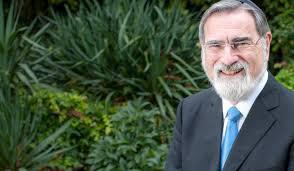
RABBI LORD JONATHAN SACKS ZT"L
RABBI LORD JONATHAN SACKS ZT"L
FORMER CHIEF RABBI OF THE UNITED HEBREW CONGREGATIONS OF THE COMMONWEALTH
FORMER CHIEF RABBI OF THE UNITED HEBREW CONGREGATIONS OF THE COMMONWEALTH
May the learning of these Divrei Torah be תמשנ
HaRav Ya'akov Zvi ben David Arieh zt"l
Right at the end of the book of Shemot, there is a textual difficulty so slight that it is easy to miss, yet – as interpreted by Rashi – it contains one of the great clues as to the nature of Jewish identity: it is a moving testimony to the unique challenge of being a Jew.
First, the background. The Tabernacle is finally complete. Its construction has taken many chapters to relate. No other event in the wilderness years is portrayed in such detail. Now, on the first of Nissan, exactly a year after Moses told the people to begin their preparations for the Exodus, he assembles the beams and hangings, and puts the furniture and vessels in place. There is an unmistakable parallelism between the words the Torah uses to describe Moses’ completion of the work and those it uses of God on the seventh day of Creation:
And God finished [vayechal] on the seventh day, the work [melachto] which He had done. (Genesis 2:2-3)
And Moses finished [vayechal] the work [hamelachah]. (Exodus 40:34)
The next verse in Pekudei states the result: Then the Cloud covered the Tent of Meeting, and the glory of the Lord filled the Tabernacle.
The meaning is both clear and revolutionary. The creation of the Sanctuary by the Israelites is intended to represent a human parallel to the Divine creation of the universe. In making the world, God created a home for humankind. In making the Tabernacle, humankind created a home for God.
From a human perspective, God fills the space we make for His presence. His glory exists where we renounce ours. The immense detail of the construction is there to tell us that throughout, the Israelites were obeying God’s instructions rather than improvising their own. The specific domain called “the holy” is where we meet God on His terms, not ours. Yet this too is God’s way of conferring dignity on humankind. It is we who build His home so that He may fill what we have made. In the words of a famous film: “If you build it, he will come.”
Bereishit begins with God making the cosmos. Shemot ends with human beings making a micro-cosmos, a miniature and symbolic universe. Thus the entire narrative of Genesis-Exodus is a single vast span that begins and ends with the concept of Godfilled space, with this difference: that in the
beginning the work is done by God-the-Creator. By the end it is done by man-and-woman-the-creators. The whole intricate history has been a story with one overarching theme: the transfer of the power and responsibility of creation from heaven to earth, from God to the image-of-God called humankind.
That is the background. However, the final verses of the book go on to tell us about the relationship between the “Cloud of Glory” and the Tabernacle. The Tabernacle, we recall, was not a fixed structure. It was made in such a way as to be portable. It could quickly be dismantled and its parts carried, as the Israelites made their way to the next stage of their journey. When the time came for the Israelites to move on, the Cloud moved from its resting place in the Tent of Meeting to a position outside the camp, signalling the direction they must now take. This is how the Torah describes it:
When the Cloud lifted from above the Tabernacle, the Israelites went onward in all their journeys, but if the Cloud did not lift, they did not set out until the day it lifted. So the Cloud of the Lord was over the Tabernacle by day, and fire was in the Cloud by night, in the sight of all the house of Israel in all their journeys. (Ex. 40:36-38)
There is a small but significant difference between the two instances of the phrase bechol mas’ehem, “in all their journeys”. In the first instance the words are to be taken literally. When the Cloud lifted and moved on ahead, the Israelites knew they were about to travel. However, in the second instance they cannot be taken literally. The Cloud was not over the Tabernacle in all their journeys. On the contrary: it was there only when they stopped travelling and instead pitched camp. During


Jerusalem Real Estate is My Business Eta: 054-723-3863
Amazing stand alone homes in OLD KATAMON, TALBIYA, BAKA, GERMAN COLONY
In BUSTAN BAKA. 2 bed & 2 bath, 82.3 sqm + 7 sqm terrace- great condition, underground pkg, Shabbat elevator 4,950,000 NIS
OLD KATAMON. 174 sqm primary residence, large garden in use, fully accessible, 4 bedrooms. Plus a studio of 19sqm. 9,500,000 NIS.
BAKA. Mini penthouse. Built 89 sqm as 2 bedrooms and 2 full bathrooms. High ceilings, amazing views outdoor space 56 sqm including pool!!! Shabbat elevator all day, 2 reg parking spaces plus storage. Living space all on one floor from elevator. Pool upstairs. Great property.
Price: 5,900,000 NIS
New exclusive Garden Apt: GERMAN COLONY. On Hildesheimer, in the Italian Colony Complex 121 sqm, 4 bedroom large living space, 73 sqm private garden, underground parking. Great condition 9,000,000 NIS
180 sqm Penthouse on an exclusive street in ARNONA. 40 sqm balcony, registered parking. Very high standard finish. 9,550,000 NIS





Eta Morris Realty, Ltd. etamorrisrealestate@gmail.com Eta: 054-723-3863 etamorrisrealty.co.il
the journeys, the Cloud went on ahead.
Noting this, Rashi makes the following comment:
A place where they encamped is also called massa, “a journey” . . . Because from the place of encampment they always set out again on a new journey, therefore they are all called “journeys”.
(Rashi’s commentary to Exodus 40:38.)
The point is linguistic, but the message is anything but. Rashi has encapsulated in a few brief words – “a place where they encamped is also called a journey” — the existential truth at the heart of Jewish identity. So long as we have not yet reached our destination, even a place of rest is still called a journey –because we know we are not here forever. There is a way still to go.
In the words of the poet Robert Frost:
The woods are lovely, dark and deep.
But I have promises to keep, And miles to go before I sleep.1
To be a Jew is to travel, and to know that here where we are is a mere resting place, not yet a home. It is defined not by the fact that we are here, but by the knowledge that eventually – after a day, a week, a year, a century, sometimes even a millennium –we will have to move on. Thus, the portable Tabernacle, even more than the Temple in Jerusalem, became the symbol of Jewish life.
Why so? Because the gods of the ancient world were gods of a place: Sumeria, Memphis, Moab, Edom. They had a specific domain. Theology was linked to geography. Here, in this holy place, made magnificent by ziggurat or temple, the gods of the tribe or the 1. “Stopping by Woods on a Snowy Evening,” in The Poetry of Robert Frost (London: Vintage, 2001), p. 224-225.
state ruled and exercised power over the city or the empire. When Pharaoh says to Moses: “Who is the Lord that I should obey Him and let Israel go? I do not know the Lord and I will not let Israel go” (Exodus 5:2), he means, ‘here, I am the sovereign power. Egypt has its own gods. Within its boundaries, they alone rule, and they have delegated that power to me, their earthly representative. There may indeed be a God of Israel, but His power and authority do not extend to Egypt.’ Divine sovereignty is like political sovereignty. It has borders. It has spatial location. It is bounded by a place on the map.
With Israel, an old-new idea (it goes back, according to the Torah, to Adam, Cain, Abraham and Jacob, all of whom suffered exile) is reborn: that God, being everywhere, can be found anywhere. He is what Morris Berman calls the “wandering God.”2 Just as in the desert His Cloud of Glory accompanied the Israelites on their long and meandering journey, so, said the rabbis, “when Israel went into exile, the Divine Presence went with them.”3 God cannot be confined to a specific place. Even in Israel, His presence among the people depended on their obedience to His word. Hence there is no such thing as physical security, the certain knowledge that here-I-am-and-here-I-stay. As David said:
When I felt secure, I said,
“I will never be shaken.”
…but when You hid Your face, I was dismayed. (Psalm 30)
Security belongs not to place but to person, not to a physical space on the surface of the earth but to a spiritual space in the
2. Morris Berman, Wandering God: A Study in Nomadic Spirituality (State University of New York Press, 2000).
3. Megilla 29a; Sifrei, Numbers, p. 161.
human heart.
If anything is responsible for the unparalleled strength of Jewish identity during the long centuries in which Jews were scattered throughout the world, a minority, it is the concept to which Jews and Judaism gave the name galut, exile. Unique among nations in the ancient or modern world, with few exceptions they neither converted to the dominant faith nor assimilated to the prevailing culture. The sole reason was that they never mistook a particular place for home, a temporary location for ultimate destination. “Now we are here,” they said at the beginning of the Seder service, “but next year, in the land of Israel.”
In Jewish law, one who rents a house outside Israel is obliged to affix a mezuza only after thirty days.4 Until then it is not yet regarded as a dwelling place. Only after thirty days does it become, de facto, home. In Israel, however, one who rents a house is immediately obligated, mishum yishuv Eretz Yisrael, “because of the command to settle Israel.” Outside Israel, Jewish life is a way, a path, a route. Even an encampment, a place of rest, is still called a journey.
In this context, one detail stands out in the long list of instructions about the Tabernacle. It concerns the Ark, in which were kept the Tablets of stone that Moses brought down the mountain, permanent reminders of God’s covenant with Israel. On the side of the Ark were gold rings, two on each side, within which poles or staves were fitted so that the Ark could be carried when the time came for the Israelites to move on (Exodus 25:12-14).
The Torah adds the following stipulation: The poles are to remain in the rings of this Ark; they are not to be removed.
4. Yoreh De’ah 286:22.
(Exodus 25:15)
Why so? Rabbi Samson Raphael Hirsch explained that the Ark was to be permanently ready when the need arose for the Israelites to travel. Why was the same not true about the other objects in the Tabernacle, such as the altar and the menorah? To show supremely, said Hirsch, that the Torah was not limited to any one place.5 And so it was. The Torah became, in the famous phrase of Heinrich Heine, “the portable homeland of the Jew.” Throughout history Jews found themselves scattered and dispersed among the nations, never knowing when they would be forced to leave and find a new home. In the fifteenth century alone, Jews were expelled from Vienna and Linz in 1421, from Cologne in 1424, Augsburg in 1439, Bavaria in 1442, Moravia in 1454, Perugia in 1485, Vicenza in 1486, Parma in 1488, Milan and Lucca in 1489, Spain in 1492 and Portugal 1497.6
How did they survive, their identity intact, their faith, though sorely challenged, still strong? Because they believed that God was with them, even in exile. Because they were sustained by the line from Psalms (23:4), “Though I walk through the valley of the shadow of death, I will fear no evil, for You are with me.” Because they still had the Torah, God’s unbreakable covenant, with its promise that “In spite of this, when they are in the land of their enemies, I will not reject them or abhor them so as to destroy them completely, breaking my covenant with them. I am the Lord their God” (Leviticus 26:44). Because they were a people used to travelling,
5. The Pentateuch, translated with commentary by Samson Raphael Hirsch (Gateshead: Judaica Press, 1982), 2:43-35.
6. Paul Johnson, A History of the Jews (Weidenfeld and Nicolson, 1982), 2:434-435.
knowing that even an encampment is only a temporary dwelling.
Emil Fackenheim, the distinguished theologian, was a Holocaust survivor. Born in Halle, Germany, in 1916, he was arrested on Kristallnacht and interned at the Sachsenhausen concentration camp, from which he eventually escaped. He recalled a picture hanging in his parents’ house when he was a child: It was not our kind of picture…because what it portrayed was not a German-Jewish experience: Jews fleeing from a pogrom. Even so it moved me deeply, and I remember it well. The fleeing Jews in the picture are bearded old men, terrified, but not so much as to leave behind what is most precious to them. In the view of antisemites these Jews would doubtless be clutching bags of gold. In fact, each of them carries a Torah scroll.
(Emil Fackenheim, What Is Judaism? (New

York: Macmillan, 1987), p. 60).
There is nothing in history quite like this Jewish ability to travel, to move on, accompanied by no more than the Divine word, the promise, the call, the faith in an ultimate destination. That is how Jewish history began, with God’s call to Abraham to leave his land, his birthplace and his father’s house (Genesis 12:1). That is how Jewish history has continued for most of four thousand years. Outside Israel, Jews’ only security was faith itself and its eternal record in the Torah, God’s love letter to the Jewish people, His unbreakable bond. And during all those centuries, though they were derided as “the wandering Jew,”7 they became living testimony to the possibility of faith in the midst of uncertainty, and to the God who made this faith possible, the God of everywhere, symbolised by the Tabernacle, His portable home.
And when the time came for Jews to make one more journey, to the land first promised to Abraham and that Moses spent his life as a leader travelling towards, they did so without hesitation or demur. Scenes of leave-taking were repeated time and again during the years 1948-51, when one after another, the Jewish communities in Arab lands – the Maghreb, Iraq, Yemen – said goodbye to homes they had lived in for centuries and left for Israel. They too knew that those homes were mere encampments, stages on a journey whose ultimate destination lay elsewhere.
In 1990, Dalai Lama, who had lived in exile from Tibet since 1951, invited a group of Jewish scholars to visit him in North India.
7. See Galit Hasan-Rokem and Alan Dundes, The Wandering Jew: Essays in the Interpretation of a Christian Legend (Bloomington: Indiana University Press, 1986).
Realising that he and his followers might have to spend many years in exile before they were allowed back, he had pondered the question, how does a way of life sustain itself far from home? He realised that one group above all others had faced and solved that problem: the Jews. So he turned to them for advice.8
Whether the Jewish answer – which has to do with faith in the God of history – is applicable to Buddhism is a moot point, but the encounter was fascinating nonetheless, because it showed that even the Dalai Lama, leader of a group far removed from Judaism, recognised that there is something unparalleled in the Jewish capacity to stay faithful to the terms of its existence despite dispersion, never losing faith that one day the exiles would return to their land.
How and why it happened is contained in those simple words of Rashi at the end of Exodus. Even when at rest, Jews knew that they would one day have to uproot their tents, dismantle the Tabernacle, and move on. “Even an encampment is called a journey.” A people that never stops travelling is one that never grows old or stale or complacent. It may live in the here-and-now, but it is always conscious of the distant past and the still-beckoning future.
But I have promises to keep and miles to go before I sleep.
8. The full story of the encounter is told in Roger Kamenetz’s book, The Jew in the Lotus (HarperOne, 2007).
These weekly teachings from Rabbi Sacks zt”l are part of his ‘Covenant & Conversation’ series on the weekly Torah teaching. With thanks to the Schimmel Family for their generous sponsorship, dedicated in loving memory of Harry (Chaim) Schimmel. Visit www.RabbiSacks.org for more.


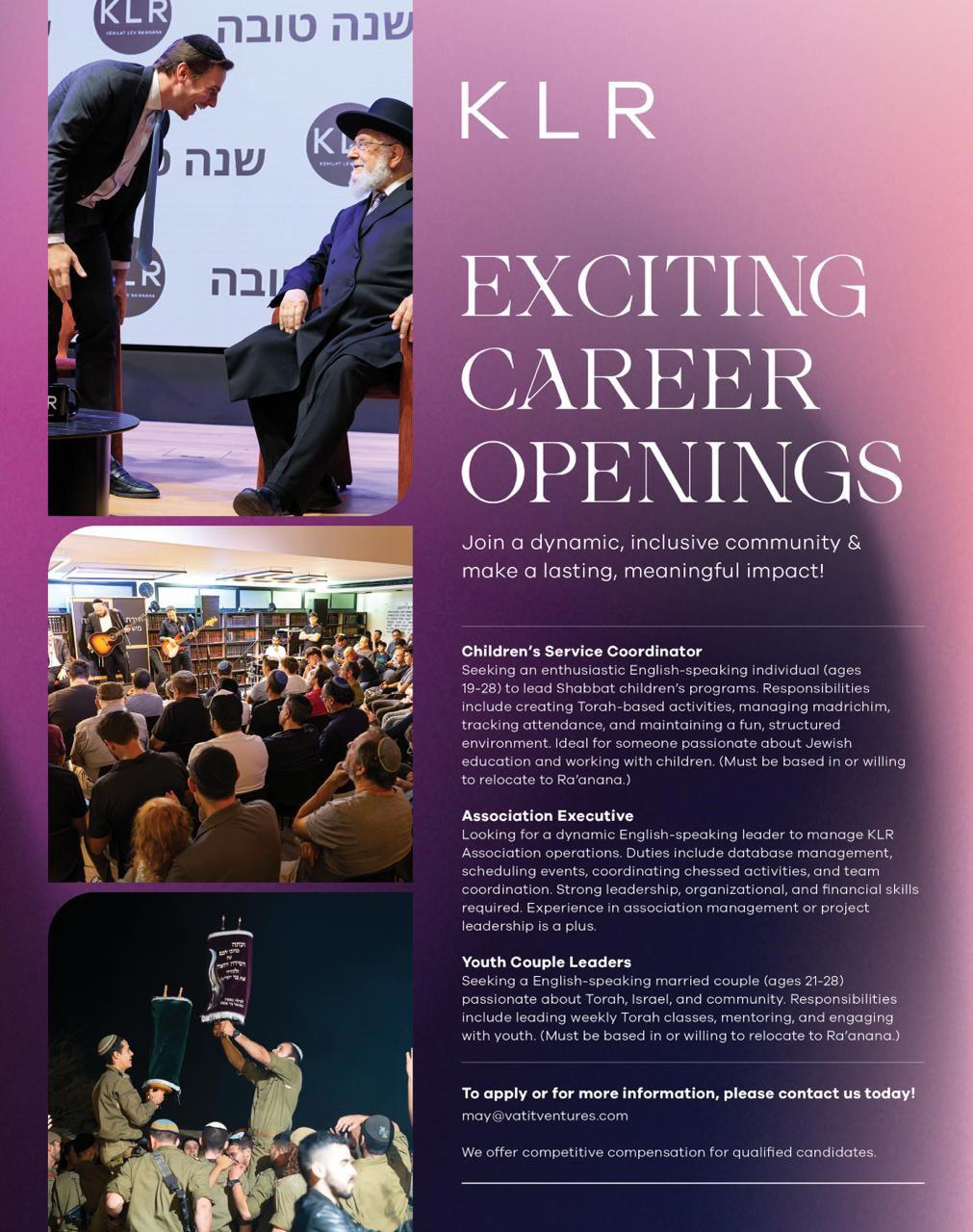



The Sara Blaustein I”HD Yom Hazikaron Ceremony
The Michael Levin Base is honored to present the largest English speaking ceremony in Jerusalem for
TUE, APR 29, 2025 | AMMUNITION HILL, JERUSALEM | DOORS OPEN AT 17:30
SEATING AT 19:00, CEREMONY AND SIREN AT 20:00
Michael Oren, Honorary board member and former Israeli Ambassador to the United States, Rabbi Moshe Scheiner , Palm Beach Synagogue, Limor Rom, Mother of Yonatan Rom I”HD, Dina Guedalia, Mother of Yosef Guedalia I”HD, Iris Haim, Mother of Yotam Haim I”HD
Performance by the IDF Rabbinical Choir, and musical presentation by The Michael Levin Base Ensemble IDF Paratroopers Flag March - Torch Lighting Ceremony Kaddish - Kel Moleh - Hatikvah
Sign up here: www.causematch.com/tmlb-yomhazikaron2025
This evening is made possible in part by a generous donation from Anne and Arthur Gober. Scan here to purchase tickets:

TICKETS: 75/150 NIS
For more information regarding transportation or group tickets, info@thebase.org.il

This is an outdoor event, please dress accordingly. Easy transportation via light rail (Ammunition Hill Stop).

BY RABBI NACHMAN (NEIL) WINKLER FACULTY, OU ISRAEL CENTER
In attempting to better understand why Chazal chose these specific haftarot from sifrei Nevi’im to be read on Shabbatot or special occasions, I find myself turning to the preceding (or succeeding) texts that, often, clarify the reason for our scholars’ choice, and, additionally shed light upon the message that Chazal hoped to leave for future generations. This is certainly true of our haftarah for Shabbat HaChodesh.
The final chapters of Sefer Yechezkel focus on the restored Jerusalem and the rebuilt Bet HaMikdash. And, while the first four p’rakim in that section (chps. 40-43) detail the physical structure of the reestablished Temple, the later chapters describe the holy rituals that would be followed there. After describing the obligation of the nation to contribute the funds necessary for the offerings of the Shabbatot and the Chagim, Yechezkel

turns to the specific rituals to be followed on the holidays – and begins by reviewing the practices that would be followed “On the first day of the first month” - a direct reference to Rosh Chodesh Nisan, that occurs this coming week. Subsequently (45:22-24), the text details those korbanot that were offered on the seven days of Pesach.
Our initial understanding would have us see Yechezkel’s review of the sacrifices and rituals for Chag HaMatzot as no more than precisely that: a review. However, a closer study would have us realize that the list of sacrifices for the festivals depicted in Sefer Yechezkel could not be referring to those rituals found in the Torah - for they are not the same!!! After all, the text reveals that these Pesach offerings were to be identical with those of Chag HaSukkot, something which the Torah’s law completely refutes!
But it is not merely the contradictions in the sacrificial rite that concerns us for, in truth, this nevu’ah of Yechezkel is quite difficult to understand in a number of ways. Even the opening verse of the haftarah that speaks of the offering, that must be given to the “nasi”, does not identify who this “nasi” is! Although some commentators suggest that it refers to the “Melech HaMashiach-the Mashiach himself- or, more generally, to the future kings, or
to the high priests yet to come, a pasuk that precedes the haftarah, helps us understand to whom Yechezkel refers.
In the ninth pasuk of the 45th perek, we read how Yechezkel berates the “nesi’ei Yisrael”-the ‘princes’ of Israel and demands that they “set aside your lawlessness and plunder and (instead) do justice and righteousness”. Here, the term “nesi’im” speaks of the nation’s leaders, and, therefore, the prophet seems to refer to the future “nasi” in the time of next Temple.
And it reveals much about the struggle of Israel during the time of the Second Temple.
The corruption and dishonesty of the “upper class” of Israel, including the ruling families, the king’s officers and the important kohanim - both in Shomron and Yehudah - is well documented throughout Sefer M’lachim. Yechezkel calls for these “leaders” to change their ways and repent. More importantly, the prophet’s earlier words serve as a preface to his depiction of the Third Temple era that we read in the haftarah He is actually insisting that the observance of a higher level of sanctity in the Temple it not sufficient, for only the complete sanctification of the society as a whole, must be included.
The prophet’s message is clear: true sanctity cannot be achieved through stricter ritual temple rituals alone. More essentially, the removal of all corruption, injustice and fraud from society and her leaders are necessary for the fruition of Yechezkel’s vision.
It is only then that the idyllic era foreseen by the navi will become a reality.
Rabbi Winkler’s popular Jewish History lectures can be viewed by visiting the OU Israel Video archive: https://www.ouisrael.org/video-l ibrary




That if you are a US citizen who owns an Israeli company, there are special US tax reporting requirements in the US.
You MAY know: You MAY NOT know:
That if the reporting is incorrect, there may be significant penalties and you might be paying more tax than necessary. Additionally, strategic planning may allow you to further reduce taxes.
Unlike basic tax preparers in Israel MASAMERICA’S US tax lawyers and CPAs have over a half century of combined experience with international tax reporting and planning. Let that expertise work to reduce your taxes and prevent future problems.

Rabbi Shalom
All the work of constructing the Mishkan, Ohel Moed and its furnishings, was completed. Bnei Yisrael did everything exactly in the manner that God had commanded Moshe.
After the description of the construction of each of the vessels of the Mishkan and

of the Mishkan itself, the Torah provides a concluding statement, that “Bnei Yisrael did everything as God commanded.” From this statement one may infer that Bnei Yisrael are credited with having built the Mishkan. Was it not Bezallel who actually constructed the Mishkan and its vessels? Bnei Yisrael merely donated raw materials. Why then are Bnei Yisrael credited with its assembly?
The Ohr Hachaim Hakadosh offers two explanations. First, although the Gemara does not use this as an example, there is a principle of ותומכַּ
– a messenger’s act is considered as the act of its sender. Since Bezallel acted on behalf of the nation, his act is considered as if it was performed by each member of Klal Yisrael.
The Ohr Hachaim offers a second explanation, which is echoed earlier in the Kiryat Sefer. No single individual can fulfill all 613 mitzvot. There are some mitzvot that do not apply to every individual. For example, certain mitzvot can only be performed by a Kohen or a Levi. Other mitzvot only apply under specific circumstances that not everyone will encounter in life. For example: divorce, returning a lost object, metzorah, nazir, eved ivri and many others. In fact, the Kiryat Sefer claims, of the 248 positive commandments there are only around 60 that are obligatory to all and that may be fulfilled today absent a Mikdash. The only manner in which one can fulfill all of the commandments is by fulfilling the mitzvot that that individual can fulfill and collectively with others as a nation, we can perform all of
the mitzvot.
Unifying Am Yisrael and each individual contributing to the construction of the Mishkan, was a critical factor that enabled Bezallel to erect the Mishkan and its vessels. Together as a unit, all contributors are credited with its construction.
Based on this idea, the Esh Tamid provides an insightful explanation of a famous Gemara, Shabbat 21a. A gentile asked Hillel to teach him the Torah on one leg, to which Hillel responded “ךומכַּ
תבהאו” – love your neighbor as you love yourself. What was the gentile asking when referring to understanding the Torah on one leg, and how did Hillel’s response of ve’ahavta l’reacha kamocha provide an answer to his inquiry?
Based on the interpretation offered by the Ohr Hachaim Hakadosh on our pasuk, the Esh Tamid provides a deeper insight into this Gemara. Perhaps the question raised by the gentile is: how am I to fulfill all the mitzvot on my own? It is impossible. It is like standing on one foot, I can only fulfill a portion of the mitzvot. Hillel’s response was: in order to be able to fulfill all of the mitzvot, you have to unify with the rest of the nation (ve’ahavta l’reacha kamocha). Only in conjunction with their performance of mitzvot, collectively, will we be credited with having fulfilled all of the mitzvot.
Am Yisrael are credited with the building of the Mishkan, because together as a nation, collectively, it was able to be constructed. All Taryag mitzvot can only be fulfilled through the unification of our nation, as one individual is not able to fulfill all of them singlehandedly. May we be able to unify as a people, and respect our differences in order to maximize our potential as a nation!















The Mishkan was completed with all its components, equipment, fastenings and utensils. “Kechol asher tziva Hashem et Moshe ken asu benei Yisrael et kol ha’avodah; Vayar Moshe et kol hamelacha ve’hinei asu ota ka’asher tziva Hashem ken asu vayivarech otam Moshe – The children of Israel had done all the work exactly in the manner that Hashem had commanded Moshe. When

Moshe saw that all the work had been done exactly as Hashem had ordered, he blessed them.” (Shemot 39:42-43) What was Moshe Rabbeinu’s brachah to the people? Further, why is Moshe Rabbeinu’s name repeated again at the end of the verse?
Rashi tells us that Moshe Rabbeinu blessed them with the words, “yehi ratzon shetishre Shechinah b’ma’asei yedechem, Vihi noam Hashem Elokeinu aleinu – May the Shechinah rest in the work of your hands, may the pleasantness of Hashem be upon us...” The Ketav Sofer expounds upon the significance of this brachah. It is natural for people to give donations for communal projects to receive accolades from others and further their own honor. In the case of the Mishkan however, the objective was to give for the sole purpose of being worthy of receiving the Divine glory amongst them. “Ve’asu li Mikdash -fashion a sanctuary for Me,” (Shemot 25:8) the donations were to be for the sake of Heaven. Thus, Moshe Rabbeinu’s brachah, “yehi ratzon, ” may it be your sole will for “Hashem’s Shechinah to rest upon you”- may you have no other ulterior motives or personal agendas. In reciprocation, Hashem will uphold His promise to rest His Shechinah upon you.
The Pardes Yosef offers another explanation. Moshe Rabbeinu blesses the people for Hashem’s glory to be placed upon ‘the works of their hands.’ Meaning, may they feel Hashem’s intimacy and closeness at all times, wherever they are occupied, not
only on the holy days of the year. In tefilat Shacharit of yom tov we say, “V’hasi’einu Hashem Elokeinu et birkat mo’adecha, l’chayim – Bestow on us, Hashem, the blessings of your festivals, for good life.” We ask Hashem to carry the energy and brachot of the chag into all parts of our lives, into our daily obligations and beyond.
Truthfully, notes the Ohr Hachayim Hakadosh, the people should have blessed Moshe Rabbeinu for giving them the opportunity to be worthy conduits of such an exalted mitzvah. Moshe Rabbeinu’s name is repeated at the end of the verse to emphasize this true perspective. Chazal teach us that when one gives tzedakah, the recipient does more for the giver than the giver does for the recipient. The recipient gains a few coins, the giver gains eternity. Moshe Rabbeinu did not wait for the people to express their appreciation; he immediately not only thanked them for their abundant contributions, he blessed them as well.
One blessing, multiple lessons. May our service of Hashem be l’sheim Shamayim, for the sake of Heaven, may we open ourselves up to feel Hashem’s brachah in our daily lives. May we always, whether we are the receiver or the giver, be the ones to offer blessings.




Mischel
EXECUTIVE DIRECTOR, CAMP HASC
AUTHOR OF BADERECH SERIES
Starting on Rosh Chodesh and throughout the month of Nissan, we are given a mitzvah opportunity to recite birkas ha-ilanos, a special blessing over a newly budding fruit tree. It was the holy practice of Rav Shlomo Zalman Auerbach, zt’l, the great tzadik and poseik ha-dor, to fulfill the mitzvah at the first opportunity and in the best way possible.
One Rosh Chodesh Nissan, after davening shacharis k’vasikin, ‘with the sunrise’, Rav Shlomo Zalman and his son set out to recite the special blessing. “Tatte, look! There are two budding trees right here, we can go right over and make the brachah.”
“Ah, thank you, yes, they are beautiful… but I prefer to go somewhere else,” Rav Shlomo Zalman replied.”
They walked some distance through Shaarei Chesed and arrived at a small courtyard where a single tree stood, with a few buds sprouting. Knowing that his father was of the halachic opinion that it is preferable to make the brachah upon seeing at least two fruit-bearing blossoming trees, the gadol ha-dor’s son was surprised. “But Tatte… There’s only one tree?” he said.
Rav Shlomo Zalman smiled at his son. “You’re right. It is preferable to make the brachah over two trees.” He then motioned
Executive Director, Camp HASC
Author of Baderech: Along the Path of Teshuva (Mosaica 2021)
toward the apartment above the garden, where an elderly woman stood at the window looking out toward the garden below. “Do you see that woman watching us? She lost her husband many years ago and lives alone, rarely venturing out. She waits all year for me to come and make birchas ha-ilanos on this tree. Bringing joy to an almanah, and showing her sensitivity, is a mitzvah d’Oraisa, a Biblical commandment, while reciting the bracha on two trees is a praiseworthy rabbinic stringency.
Rav Shlomo Zalman looked toward the window, nodded at the elderly woman, smiled, and made the brachah over her tree.
Our sedra describes the building of the Mishkan, and details the elements of its construction. Every element of the structure, from its design, materials, colors, and size, was according to Hashem’s instructions:
“Just as Hashem had commanded Moshe, so did Bnei Yisrael do all the work
And Moshe saw all the work, and behold they had done it as Hashem had commanded, kein asu, ‘so had they done’, and Moshe blessed them” (Shemos, 39:42-43).
The Ohr haChayim haKadosh teaches that there are certain details in our performance of mitzvos that, while optimal and enhance the mitzvah, are not required. The Torah’s
repetition of kein asu, “and so they did,” teaches us that Bnei Yisrael did everything they were commanded, םניאש םירבד וליפא רחבומה ןמ הוצמ אלא, “even those elements that are not required but which optimize the fulfilment of the mitzvah”.
Rav Dr. Yitzchak Twersky, The Tolner Rebbe, zy’a, sees the construction of the Mishkan, meeting place between Am Yisrael and Hashem, as a paradigm for our fulfilment of mitzvos, as well as a fundamental life lesson in our Divine service. Mitzvos are opportunities for us to draw close to Hashem; when we fulfill them min ha-muvchar, ‘in their ideal form’, we express a desire to draw close to God. When we invest ourselves in following halachah with dedication and enthusiasm, we continue the precedent of kein asu. Striving to go beyond the letter of law and exceeding that which is required, we express our desire to live a life of fulfilling ratzon Hashem in the highest possible way.
Starting on Rosh Chodesh Nissan, we can recognize the exalted levels of commitment to halachah prevalent in Jewish homes. The intensive efforts, dedication and stringencies prevalent in every community in Klal Yisrael are certainly a source of nachas to Hashem, a limud zechus on High. Pesach season is a ‘headquarters’ of chumros, stringencies and ‘extras’, along with our minhagim, holy family traditions and customs. At a time where we are so focused on striving to live with mitzvah min ha-muvchar, it is critical to remember where to focus our priorities.
Rav Yisrael Salanter, zt’l, warned his students that they ought to be ‘machmir’, stringent in preparing and baking matzos and fulfill every aspect of the halachah beyond
New Studies on the Torah 7 Volumes - English Translation
21 Volumes - English Translation Nehama Leibowitz


the letter of the law. He also charged them to make sure to be sensitive and kind to the women who worked in the matzah bakery, most of whom were poor and many of whom were almanos.
May we, this Rosh Chodesh Nisan and Yom Tov season, merit to fulfill all of our obligations
׳ה הוצ רשאכַּ, “as God has commanded us”, and observe mitzvos min ha-muvchar — by following in Rav Shlomo Zalman’s example, keeping ‘the main thing’ the main thing.
*Excerpted from Rav Judah’s newly published Baderech Haggadah: Along the Path of Redemption (Mosaica 2025)
To find out more about Rabbi Mischel’s book ‘Baderech Haggadah’, visit: www.judahmischel.com/ baderech-book





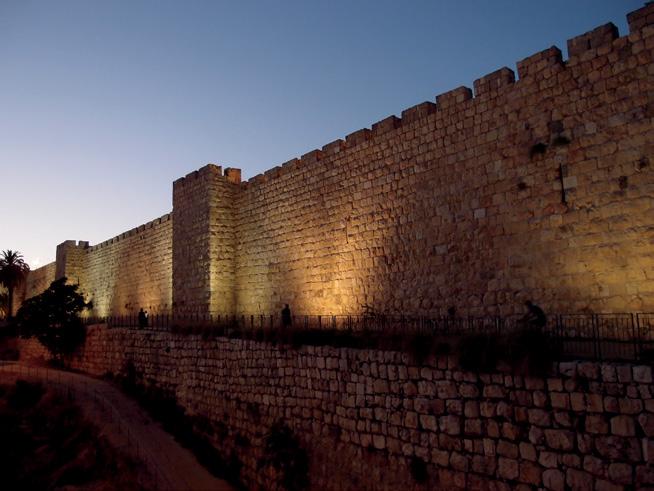
Modern Building in Baka - Spacious, 95m, 3 rooms (can be turned into 4 rooms), Shabbat elevator, private parking, storage room, 8m mirpset, green view, right off the park. 4.95m nis
Brand New Building in Mekor Chaim - Recently finished, 4 rooms, 111m, mirpeset, stoarge, parking and Shabbat elevator, 3rd floor. 4.37m nis
Great Opportunity to Buy in a New Building Starting Construction in Arnona Close to Baka. Great prices and the price isn't linked to inflation! Starting at 2.55m nis

a life insurance policy you:
• No longer want?
• No longer need?
• Can no longer afford the premium?
• Could you use extra money instead of keeping your policy?
I can guarantee that if you qualify with the underwriting process I can get you more money than if you cash it in with the company. Please contact Moshe Russell at: Buymypolicy32@gmail.com


Bar-Ilan University International School invites you to take the next step in your academic journey!
We offer Undergraduate, Graduate, PhD, and Postdoctoral programs in English and bilingual tracks (English & Hebrew).
Join a diverse, dynamic learning environment at one of Israel’s leading universities.
Apply today and shape your future with Bar-Ilan!

Impacting tomorrow, today.

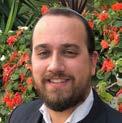
PAGE BY RABBI EZRA FRIEDMAN Director, The Gustave & Carol Jacobs Center for Kashrut Education Director, The Gustave & Carol Jacobs Center for Kashrut Education
The prohibition
According to Biblical law, food that is completely kosher and cooked by a nonJew is permitted. However, our Sages decreed that such food, even when cooked in kosher utensils, is prohibited for consumption. This prohibition is known as bishul akum. In the coming weeks we will discuss the parameters of this rabbinic prohibition, including the reasons behind the decree, when it applies, and the practical halacha for modern industrial kashrut.
According to the Torah, any of the five grains—barley, oats, rye, spelt, and wheat— that are Yashan (i.e., they were planted and harvested before the third day of Pesach in the upcoming year) are permitted for consumption. However, grains that are planted, cultivated, and harvested after the third day of Pesach are considered Chadash and are prohibited for consumption until the following Pesach. A key issue regarding the prohibition of Chadash is whether it applies to grains grown outside the Land of Israel.
Food is a very connecting element in every society. That is the basis behind the decree of bishul akum. Our Sages were very concerned about close relationships with non-Jews since intermarriage is a very severe transgression. The prohibition effectively limits Jews and gentiles dining with each other, although there is no specific prohibition against dining with a non-Jew per se. (See Rashi on Avodah Zara 31:b.)
that Chadash is similar to Shemittah and only applies to grains grown in Eretz Yisrael.
maintain that the decree is based on this issue of closeness to non-Jews that could lead to intermarriage; this is the opinion of most early authorities. However, Rashi and others attribute a different reasoning to the prohibition of bishul akum, which is that non-Jews might mix non-kosher ingredients into the kosher food. In future articles we will discuss whether the parameters of bishul akum are based on both of these reasons or just one. However, it is clear from numerous sources that the danger of intermarriage is the main reason behind the prohibition (See Torat Habayit 3:7).
The decree is binding regardless of the reason
A general rule in the Talmud is that in cases of dispute, the halacha follows the majority opinion. In the case of Chadash, it would appear that the halacha should align with the Chachamim, as they represent the majority. However, another Mishnah in Masechet Orlah clearly follows Rabbi Eliezer’s opinion. Consequently, nearly all early authorities, including the Rambam, Ri”f, and Tosafot, rule in accordance with Rabbi Eliezer, stating that the prohibition of Chadash applies to Chutz La’aretz as well. The Shulchan Aruch (YD 293:2), based on these authorities, rules explicitly that the prohibition of Chadash applies to grains grown both in Israel and around the world.
Forbidding the non-Jew’s cooking would be enough to create an emotional distance such that families wouldn’t marry into each other.
Rabbeinu Tam (Tosfot Avodah Zara 38:a) and Rambam (Ma’achalot Asurot 17:9)
The Mishnah in Masechet Kiddushin (1:9) presents a Tannaitic dispute regarding the parameters of Chadash. The Mishnah states that all mitzvot related to produce grown in the ground, such as Terumot and Ma’asrot (tithes) and Shemittah (the sabbatical year), apply solely in Eretz Yisrael. It further clarifies that mitzvot not connected to produce, such as Tefillin and Shabbat, apply universally. The Mishnah then records a dispute between Chachamim and Rebi Eliezer. Rebi Eliezer holds that the prohibition of Chadash applies to grains grown everywhere in the world, while the Chachamim disagree, ruling
Since the transgression of intermarriage was the primary concern behind our Sages’ decree, their goal was to powerfully discourage the possibility of developing emotional connections to non-Jews that could lead to intermarriage either in that generation or the next. Accordingly, early authorities discuss whether the prohibition of bishul akum still applies even in situations where intermarriage is not technically possible. For example, Rashba, in his responsa (1:248), examines the case of food cooked by a priest. Being that Catholic priests do not marry nor do they have children with whom to intermarry, is it permitted to eat food cooked by a priest even though the reason for bishul akum seemingly does not apply to
Chadash is undoubtedly a biblical prohibition, although there is some dispute among authorities regarding whether this prohibition applies solely in Israel. Rabbeinu Baruch and Rabbeinu Avigdor assert that while there is a clear prohibition of Chadash in Chutz La’aretz, it is only a rabbinic prohibition outside of Israel, and one may be lenient in certain dire circumstances. However, Rosh, in his responsa, presents numerous proofs from other Talmudic sources that the prohibition of Chadash is biblical, regardless of where the grains are grown. This view is also supported by other authorities, such as Rambam. The Shulchan Aruch similarly rules that Chadash is a biblical prohibition,
whether the grains are grown in Israel or overseas.
Another important issue concerning grains grown outside Israel is whether the prohibition also applies to grains grown by non-Jews. There is no dispute that the prohibition of Chadash applies to any grain grown in Israel, whether by Jews or non-Jews. However, Mahari”l Mei”l Tzedek ruled that while Chadash applies in Chutz La’aretz, it only applies to fields owned by Jews. This opinion has been refuted by early authorities. Based on the understanding that Chadash is akin to any non-kosher product or Chametz on Pesach, the ownership of the field is irrelevant to the prohibition. As such, Chadash is prohibited regardless of whether the field is owned by Jews or non-Jews.

The OU Israel Gustave & Carol Jacobs Center for Kashrut Education was created to raise awareness and educate the public in all areas of kashrut. Rabbi Ezra Friedman, Deputy Rabbinic Administrator for OU Kosher Israel is the Center's director. him? Rashba answers that we have a rule regarding rabbinic decrees: even when the reason does not apply, the prohibition still stands. This is a necessary element in every rabbinic prohibition. Otherwise, Rashba explains, people could rationalize and find reasons why any decree should not apply in their particular situation. Accordingly, Rashba concludes that even food cooked by a Catholic priest has the prohibition of bishul akum. A similar ruling is made by Ramban (Avodah Zara 35:a) regarding non-Jewish royalty who, because of their stature, are prohibited from marrying Jews. He maintains that the fact that the non-Jews are royalty is irrelevant, and that the decree of bishul akum stands regardless of the reason behind it. Taz (YD 112:1) , Shach (YD 112:4) and Pri Megadim (YD 112:1) cite these rulings as axioms of the laws of bishul akum.
Other examples
In summary, it is accepted that Chadash is a biblical prohibition, whether the grains are from Chutz La’aretz or Eretz Yisrael, and regardless of whether they were owned by Jews or non-Jews. The validity of the Chadash prohibition in Chutz La’aretz became a subject of significant dispute among later authorities. This dispute has practical implications for contemporary rulings. In future articles, we will explore this dispute and its practical applications.
Later authorities discuss similar cases where the logic behind bishul akum may not apply. Responsa Shevet Kehati (6:273) rules that even food cooked by a non-Jewish child is considered bishul akum, despite the fact that the chances of marriage seem remote. The same is true for food cooked in a faraway country where Jews cannot travel --




young children, and non-Jews from distant lands.



Our Sages prohibited food cooked by

simchat shmuel
BY RABBI SAM SHOR DIRECTOR, TORAH INITIATIVES, OU ISRAEL
BY RABBI SAM SHOR Program Director, OU Israel Center
This Motzai Shabbat, we will celebrate Rosh Chodesh Nisan, which means that just two weeks later we will be gathering together to rejoice at our Pesach Seder tables. Sadly, many among us will approach these next two weeks leading up to the yom tov of Pesach, as a time of stress, aggravation and discomfort, rather than as an opportunity for renewal and re-invigoration.
The Shabbat preceding Rosh Chodesh Nisan, is known as Shabbat HaChodesh. The special maftir segment which is read on this Shabbat, records the very first mitzva given to the Jewish people. It instructs us in the mitzva of Kiddush HaChodesh, introducing us to the concept of Rosh Chodesh. These verses also instruct us in the basic laws of Pesach, and of preparing the Korban Pesach.
Parshat HaChodesh begins with the familiar verse:
HaChodesh Hazeh Lachem Rosh Chodashim, Rishon Hu Lachem L’Chodshei HaShana- This month shall be for you the beginning of the months, it shall be for you the first of the months of the year...
In Sefer Ohr Gedalyahu, Rabbi Gedalia Schorr ztvk’l, offers a beautiful insight as to the significance of this opening pasuk:
“ The redemption begins with this parsha of HaChodesh Hazeh lachem, the galut began when a new king arose upon Egypt- Vayakam Melech Chadash, that with that new King-the Egyptians oppressed the Jewish people and
took from them the capacity for renewal, and once Hashem uttered the words of HaChodesh Hazeh Lachem, the redemption began, as the power of creativity and renewal was restored to the Jewish People...”
As we enter Chodesh Nisan, and begin to prepare ourselves for the yom tov of Pesach, the yom tov of geula, explains Rav Gedalia Schorr, we are once again given an opportunity to feel spiritually re-invigorated.
Similarly, the great Chasidic Master the Birkat Avraham zy’a of Slonim offers this original insight on our verse:
“ HaChodesh Hazeh Lachem-Rosh Chodashim- HaChodesh Hazeh- this entire month-every day of this month has the sanctity and capacity of Rosh Chodesh! Rishon Hu Lachem- The Midrash teaches us that Hashem is called Rishon. Throughout this entire month of Nisan, HaKadosh Baruch Hu reveals his presence to each and every member of Klal Yisrael...”
Yehi Ratzon, As we read Parshat HaChodesh and bentch Rosh Chodesh Nisan this Shabbat, may we be blessed to heed these two beautiful teachings from the Ohr Gedalyahu and the Birkat Avraham, and may we be blessed to feel that restoration of the inspiration and capacity for renewal and growth that comes with feeling Hashem’s presence in our lives each and every day. Chodesh Tov!
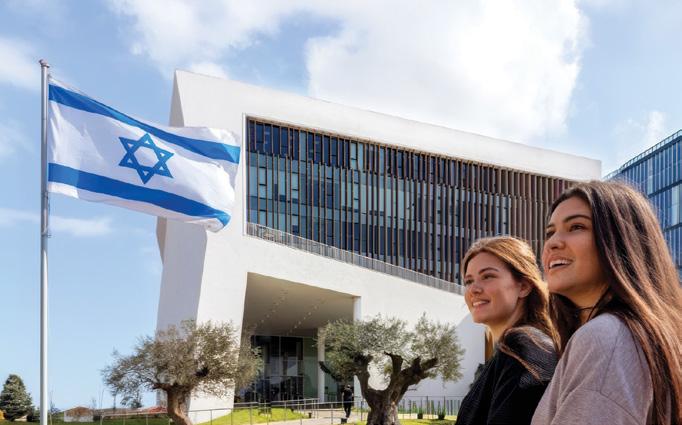

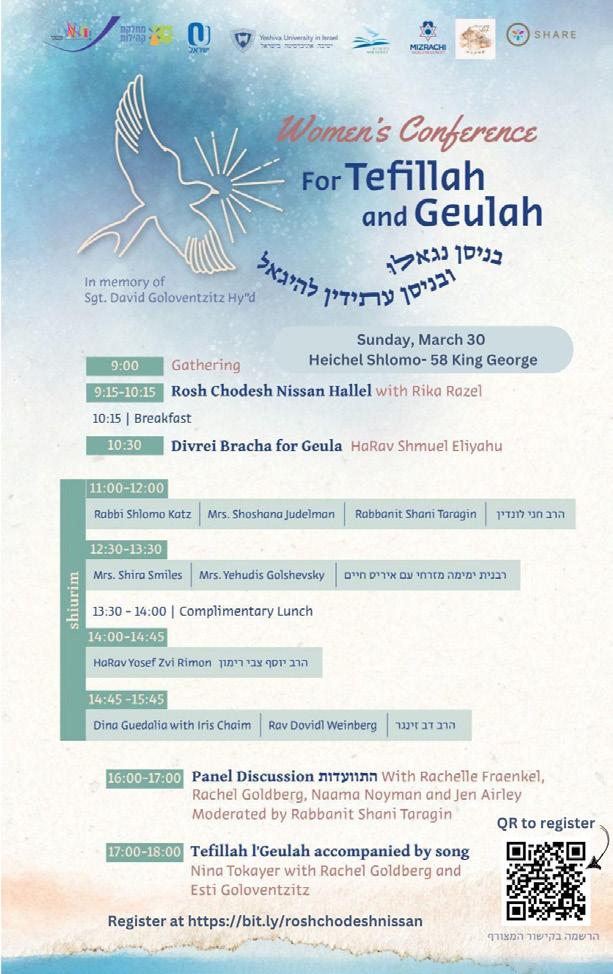

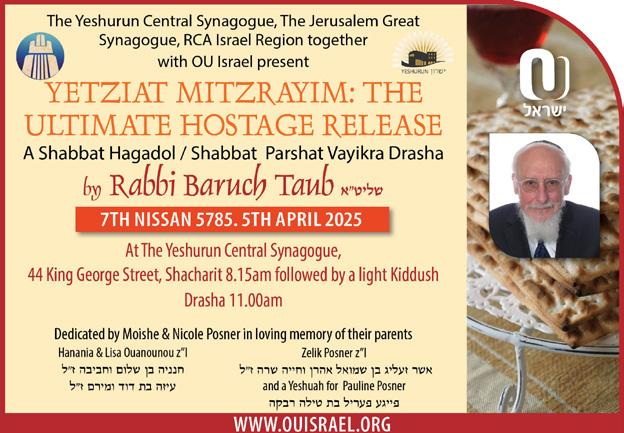








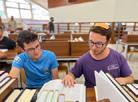



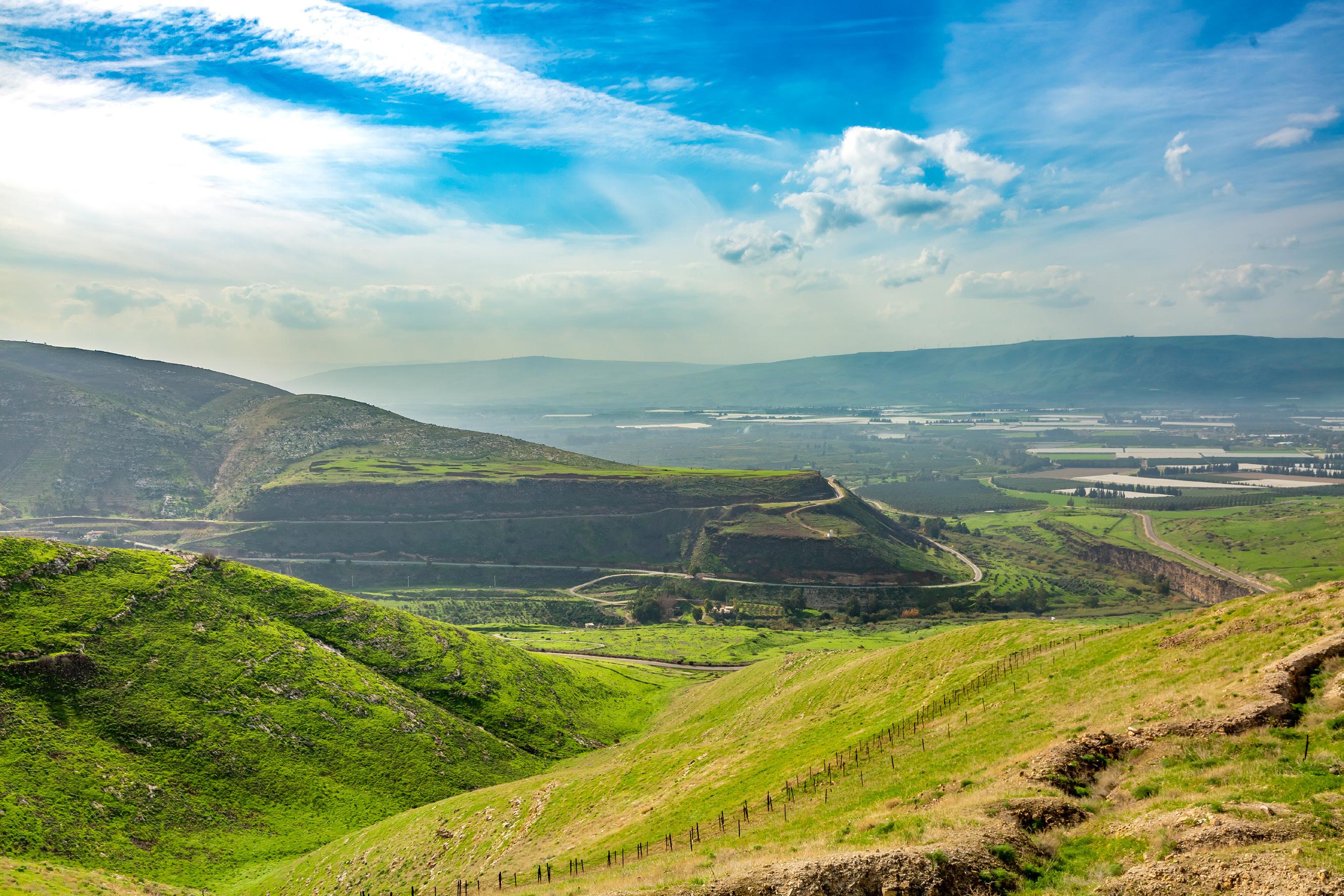

Mount of entire this things connecessence us the because essence. Sinai physical mitzvot matters. that voice, afterlife. I canFor no foland comreal amazing teachreceived us
TO SPONSOR A SHIUR CONTACT
Chana Spivack - 050-229-4951 or donate online: https://www.ouisrael.org/donate/ou-israel-center/
RABBI BRIETOWITZ’S SHIUR - TUE. MAR. 25TH
Sponsored by Anna Krycer in memory of her husband
On his first Yahrzeit, we miss, love and honour Joe Krycer z”l - יבצ
and young professionals. JLIC Israel’s goals include: building a warm and welcoming Jewish community for students and young professionals; providing engaging and dynamic Jewish education; providing a supportive home environment for Olim; providing resources for personal and religious growth, including personal mentoring, Aliyah support, religious guidance and leadership development. Current JLIC programs in Israel include: Reichman University - Herzliya; Bar Ilan University - Givat Shmuel; Tel Aviv University; Tel Aviv for Young Professionals; and Jerusalem. Contact: Rabbi Jonathan Shulman, Director of OU-JLIC in Israel shulmanj@ou.org
His last words minutes before his death at age 75, were “Family, family”. We believe the repetition intended to refer firstly to his beloved family, and secondly to the family of man, who he sought to serve, support and empower with vision and passion. May we continue to learn and love in his merit.
April 14 2024 | 10AM April 14 2024 | 10AM N US N S
Sponsored for the 2025 academic year
When one sees blossoming fruit trees for the first time during the month of Nisan, one should say this blessing:
RABBI GOLDSCHEIDER’S SHIUR
Sponsored for the 2025 academic year

For Sale: Ben Maimon, 4 rooms, 113m, 2 bathrooms, porch, 1st floor, elevator, 6.2 million NIS

Smadar 050-3114040 // 02-642-4329 smadi_bida@walla.co.il
RABBI ADLER’S SHIUR
Sponsored for this academic year by the Frist family in memory of their beloved daughter and sister Elisheva Frist a”h –
Resumes Tuesday, May 21
This blessing is said just once a year—the first time that one sees it.
RABBI SHAI FINKELSTEIN’S SHIUR
WOMEN'S WRITING WORKSHOP AT THE OU ISRAEL CENTER
Sponsored for the 2024-2025 academic year by the Sondhelm and Wertenteil Families in memory of Mel & Sylvia David z”l
Monday mornings 10.30-12.30 For more details, call Ruth 02-628-7359 or Judy 054-569-0410
PLEASE NOTE UPCOMING TORAH TIDBITS ADVERTISING DEADLINES
Tuesday OU ISRAEL CENTER 91
ISSUE 1607 (APRIL 4-5)
Deadline for ads: Sunday March 30th
ISSUE 1608 (PESACH)
Deadline for ads: Thursday Morning, April 3rd
GET FIT WHILE YOU SIT: Exercise for ladies Sundays 12:45-1:30pm at the OU Israel Center Sura Faecher 0504153239 Resumes Oct 15th 12:30-1:15pm
ISSUE 1609 (APRIL 25-26)
Deadline for ads: Sunday April 20th
ISSUE 1610 (MAY 2-3):
Deadline for ads: Thursday, April 24th
Tzitzit tying at the OU Israel Center with Ruti - no experience needed
For advertising information call or email Ita Rochel 02-560-9125 | ttads@ouisrael.org
Mondays at 1:30pm and Wednesdays at 12:00pm







“Turning Despair into Hope”
www.yeshezra.org
Director: Menachem Persoff

THIS WEEK: The list is growing! 40 families are in dire need of Kimcha Depiska. Your generous contribution makes all the difference! Thank you.
Website: www.yeshezra.org
Bank Transfer: Mercantile (17), Branch 642, A/C 79747843
Send Asmachta for receipt
Checks: “Yesh Ezra,” POB 31476, Romema, Jerusalem
Credit Card:
Sara – 077-820-0196 / 058-530-9161
Sun-Wed (10:00am-14.30 pm)
Tax benefit for donations as per section 46a of the Israeli tax code
Inquiries: Menachem Persoff 050-570-1067 | menpmp@gmail.com


Now taking reservations for July/August for the perfect family getaway in the Lower Galilee!
Well appointed kosher home with indoor/outdoor kitchens 15m pool, gorgeous grounds Space for 40 people



RABBI
RAM YESHIVAT HAR ETZION
MAGGID SHIUR ALL PARSHA AND ALL DAF, OU.ORG
The iconic term Mishkan evokes the idea of Hashem’s presence dwelling among His people. Long before the Mishkan ’s construction, this concept was hinted at in the encounter between Malki-Tzedek the king of Shalem and Avraham. When blessing Avraham, Malki-Tzedek referred to Hashem as the ruler of both heaven and earth, acknowledging that Avraham had transformed humanity’s understanding of the Divine. No longer was Hashem a distant and abstract force; through Avraham’s mission, He entered the human realm, shaping imagination and experience.
When Yitzchak considers leaving the Land of Israel, Hashem commands him to stay, using the word “ןוכַּש”—not merely instructing him to remain physically, but urging him to embed the Divine presence within the local culture. Yitzchak was called to cultivate a deeper awareness of Hashem within the land itself, transforming it into a place where holiness could take root and flourish.
Hundreds of years later, the mission of bringing Hashem into our world was no longer the charge of individuals alone—it became the calling of an entire people. We had stood at Har Sinai, experiencing direct and overwhelming revelation. But those fiery displays, that electrifying
encounter, were not meant to define our daily existence. Instead, Hashem instructed us to build something quieter, something more serene—a place that would house His presence in a lasting and sustainable way.
Thus, the temporary sanctuary in the wilderness was called the Mishkan. It was not permanent. Unlike the Beit HaMikdash, it was not anchored in the heart of our capital. It did not command the attention of the entire world. It was not even referred to as a house, but simply as a Mishkan—a dwelling, a place where the Divine presence could reside amidst His people in the steady rhythms of daily life.
Chazal, however, discern a deeper, more enduring significance in the term Mishkan, one that speaks to the unbreakable covenant between Hashem and His people. Rashi cites the Midrash, that at times, the Mishkan/Mikdash itself would serve as a mashkon—a form of collateral held by Hashem. When we betrayed Him, when we strayed from His ways, Hashem, as it were, took the Mishkan/Mikdash as a mashkon, withholding His presence from us as a consequence of our rebellion.
The Torah subtly alludes to this idea by repeating the word Mishkan in the same verse:
This doubling hints at the two times in history when Hashem seized His sanctuary—the destruction of the first and second
Batei Mikdash. The same structure meant to house the Divine presence could, in moments of national failure, become a sign of absence—a painful reminder of what we had forfeited. Twice in history, Hashem transformed His earthly home into a mashkon, a collateral seized in sorrow, yet whispering the promise of redemption.
Though this is an ominous foreshadowing, it carries a deeply reassuring message and for this reason, the message of mashkon was delivered at the very dawn of the Mishkan ’s inauguration. The mashkon announcement reminds us that despite our moral and religious failures, despite Hashem’s justified anger, our people will never be utterly forsaken.
The Midrash in Eicha describes a fateful decision taken in heaven at midday on Tisha B’Av. As our enemies stormed the Mikdash , threatening to annihilate the Jewish people, Hashem made a choice—to direct His wrath toward “wood and stone” rather than toward His children. At that moment, the Mikdash was set ablaze, not merely as an act of destruction but as a divine declaration that He would spare His nation, channeling His anger toward the edifice but sparing His children.
For this reason, our mourning on Tisha B’Av shifts at midday, when the Mikdash began to burn. The tragedy of loss of the Mikdash structure contains within it the assurance of our survival. The message of the “Mishkan as a mashkon” reminds us that even when we falter, even when we betray our calling, we will outlast our failures—though at the agonizing cost of losing our sacred Mikdash.
There is a second, deeply comforting message in referring to the Mikdash as a mashkon. A mashkon is a prized possession temporarily surrendered by a borrower when payment is delayed. It serves as a guarantee, ensuring that the debt will eventually be repaid. By holding onto the collateral, the lender maintains a connection with the borrower, preventing him from disappearing and ensuring that a day of reckoning will come.
So too, when Hashem takes the Mikdash as a mashkon, it is not an act of final severance but a promise of return. The Mikdash sanctuary is held in trust, awaiting the day when we will be worthy to reclaim it. The notion of a mashkon implies that the borrower will one day stand before the lender once more, ready to redeem what was lost. Our exile is not an abandonment, nor has Jewish history been sealed with an irrevocable decree. Hashem holds onto our Mikdash waiting for the moment when He will return it to us, just as a lender patiently awaits the day he can reunite with the borrower and restore what was merely held in trust. Our exile is not abandonment; it is a pause before redemption.
Additionally, by designating the Mikdash as a mashkon, Hashem stresses that the Mikdash is rightfully ours- once our debt is repaid, He will return it to us. Hashem wants us to view the Mikdash as our own, as our rightful home, built with our hands, our toil, and our devotion. Unlike Har Sinai- a mountain peak divinely chosen for revelation- the Mikdash was not divinely constructed—it was forged
through our labor, our yearning, and our sacrifice. By describing it as a mashkon, Hashem emphasizes that He has taken it temporarily, but a day will come when He will be “compelled” to return to us what is rightfully our own.
Finally, the image of a mashkon teaches us that we carry a historical debt, just as a borrower who offers collateral remains obligated to repay the debt he owes and for which he deposited a collateral. Jewish history is dynamic, unfolding across generations. Though we inhabit a specific moment in time, we are part of an unbroken chain, inheriting both the merits and the burdens of those who came before us. Chazal teach that any generation that does not rebuild the Mikdash is considered as if it had destroyed it. Our failure to fully repay the spiritual debts of the past is not merely a historical shortcoming—it is an ongoing responsibility, a charge that rests upon our shoulders until we restore what was lost. Until we fully repay the debt of Jewish history the mashkon will not be returned.
A different Midrash (Berieshit Rabbah 44:18) presents an alternate image of collateral—one in which we, the Jewish people, serve as the mashkon rather than the Mikdash itself. At the dawn of Jewish history, during the covenant of Brit Bein HaBetarim, Hashem assures Avraham of the unfolding destiny of his descendants:
Sensing the repetition of the root
- to know, the Midrash explains that Hashem provided a dual message. He informed Avraham not only of the hardships of
Jewish exile but also of the certainty of our eventual return.
Hashem forecasts: I will scatter them, but I will gather them. I will deliver them as a mashkon, but I will redeem them. I will subject them to oppression, but I will liberate them.
This Midrash captures three distinct hardships of Jewish exile. First, we endure persecution and discrimination, but Hashem assures us that this suffering will end with our redemption. Second, we are scattered across the world, estranged from one another rather than united as a single family, yet Hashem promises to gather and restore us as one people. Finally, we are delivered as a mashkon—a collateral—an image that goes beyond mere dispersion and oppression. What does this metaphor signify beyond exile and suffering? What deeper message is hidden within the notion that we, ourselves, become the mashkon in Hashem’s design of gallut?
A mashkon exists in an unnatural state— though it belongs to the borrower it is temporarily held by the lender. Reclaiming the collateral is not just a financial transaction; it is a restoration, a return to its rightful place. So too, the Jewish people, even when not persecuted or scattered, remain displaced when living outside their homeland. Our natural existence is in Israel, under the direct gaze of Hashem. When Hashem promised Avraham that we would be taken as a mashkon, He also assured him that this unnatural state would not endure forever. One day, He would correct this imbalance
and return us to our rightful home.
We are searching for our mashkon—the Mikdash, the house we built, the home that is rightfully ours. With courage, dedication, and sacrifice, we strive to repay the debt of Jewish history. As we attempt to reclaim our mashkon, and it is deeply reassuring to know that just as we seek our mashkon, Hashem seeks His mashkon—His people. One day, all that has been held in trust will be restored—the Mikdash to our people and our people to Hashem.
All the mashkons will be returned to their rightful owner and to their rightful home.

Rabbi Taragin’s newest sefer entitled “Reclaiming Redemption Deciphering

Live in a Historical Home in Ein Kerem for a Great Price!
Beautiful duplex apartment in the heart of Ein Kerem, 125 sqm, 4.5 rms, 1.5 baths, large rooms with domed ceilings, balcony with view over the neighborhood, close to shops, cafes and public transportation, well maintained condition, lots of potential! Priced to Sell: NIS 3,650,000
Investment Opportunity in Armon Hanetziv!
3 room apt, 65 sqm, floor -2, balcony overlooking the park, quiet, bright, 3 air directions, for renovation. Asking price only NIS 1,650,000 This is an opportunity not to be missed!!








BY REBBETZIN DR. ADINA SHMIDMAN
DIRECTOR, OU WOMEN’S INITIATIVE

Yechezkel describes in detail the offerings that will be brought in the Beit HaMikdash during the time of redemption. He outlines the special karbanot, focusing particularly on the role of the Nasi, the leader who models religious devotion through personal offerings and structured ritual.
The essence of a korban is found in its root: karov, to draw near. As Rav Samson Raphael Hirsch emphasizes, karbanot are not mere rituals of atonement or appeasement. They embody acts of nearness, expressions of humility, surrender, gratitude, and aspiration. In confessing sin over a korban, in offering flour instead of a lamb when one is poor, or in daily tamid offerings on behalf of the entire nation, we are brought face-toface with our dependence on Hashem—and our ability to serve Him in every situation we find ourselves.
In Yechezkel’s vision, the Nasi brings a chatat offering on Rosh Chodesh and Pesach—not because he has sinned, but because renewal demands self-examination. It’s a striking idea: even on days of joy and rebirth, we are called to reckon with our shortcomings. Karbanot become both an expression of gratitude and
a path to growth. The Tamid offering, brought every morning and afternoon, underscores this daily journey—reminding us, as the Midrash teaches, that our avodat Hashem must be constant, fresh, and infused with energy. Every day, every act, every offering—whether tefillah, learning, or kindness—can be an encounter with the Divine, if approached with presence and passion.
The transition from karbanot to tefillah, as noted by the Anshei Knesset HaGedolah, carries this message forward. We no longer stand in the Mikdash, but we stand before Hashem with our tefilot, bearing the same responsibility to bring our full selves—our “flour and wine,” our aspirations and flaws. Our prayers must not be perfunctory; they are ma’amadot, spiritual reenactments of national participation. Each of us becomes part of a timeless offering.
Rav Hirsch notes that even the Mincha offering—seemingly modest—is rich with symbolism. Flour, oil, frankincense: our food, comfort, and fleeting joys are all from Hashem. Yeast and honey were prohibited because they represent additives—external enhancements. Salt, however, is required,
because it brings out inherent flavor. We serve Hashem not by becoming someone else, but by refining who we already are. As the bread is dipped in salt, we are reminded to actualize our G-d-given potential and elevate the everyday.
As Parshat HaChodesh ushers in a season of renewal, we are called to reclaim the spirit of the korban—to approach our tefillot with sincerity and our daily service with constancy, humility, and gratitude. May we, like the Nasi in Yechezkel’s vision, offer ourselves as living sacrifices—not in body, but in commitment and courage—to the sacred mission of geulah.






DIRECTOR OF OU ISRAEL WOMEN’S DIVISION
This week, as we approach Rosh Chodesh Nissan, we read Parshat Hachodesh, in which the Jewish people receive their very first mitzvah as a nation – the mitzvah of Kiddush Hachodesh, sanctifying the new month. At first glance, this choice seems surprising— why not a mitzvah more fundamental, like Shabbos or Talmud Torah? But if we take a deeper look at the mitzvah Kiddush HaChodesh, we can learn profound messages about our role in the world as a nation—and also in our parenting.
Rav Yosef Dov Soloveitchik explains as follows – “Time-awareness is the singular faculty of the free man, who can use it or abuse it. To a slave, it is a curse or a matter of indifference. It is not an instrument which he can harness to his purposes. The free man wants time to move slowly because, presumably, it is being employed for his purposes”. (Reflections of the Rav). True freedom is defined by control over time. The first step toward redemption was Hashem’s gift of time to Bnei Yisrael, allowing them to take responsibility for their lives. Rosh Chodesh, then, represents not just the passage of time but our ability to sanctify it. This lesson is especially relevant in
parenting. Time is one of the greatest gifts we can give our children, but it is also one of our greatest challenges. In the busyness of life, it is easy to let time slip through our fingers, yet Rosh Chodesh calls us to pause and ask: Are we using our time wisely? Are we investing our time in what truly matters? Our children do not just need us to provide for them; they need our presence, our attention, and our investment. Are we making quality moments with them? Do we set aside time to truly connect, listen, and nurture our relationship with them? Time is not just something we track; it is something we create, and the way we use it defines our relationships—especially with our children.
One of the most unique aspects of Rosh Chodesh is that it is not simply a date on the calendar that we commemorate; it is a day that we actively establish. The Beit Din does not just record time; it creates it. Gemara Rosh Hashanah 25a explains that even if the Beit Din were to miscalculate or declare the new month in error, their ruling determines the calendar—and even Hashem follows their declaration. This is incredible: Hashem entrusts us with the power to define time. It is
a statement of partnership—Hashem does not just run the world while we passively follow; we are active participants in shaping reality.
The mitzvah of Kiddush HaChodesh emphasizes our partnership with Hashem, a theme deeply relevant to parenting. Chazal (Gemara Niddah 31a) teach that there are three partners in the creation of a child: the father, the mother, and Hashem. While we provide the physical elements, Hashem gives the neshamah, shaping each child with unique strengths, challenges, and potential. But the partnership does not end at birth; it continues throughout the journey of raising a child.
Just as Beit Din determines Rosh Chodesh and Hashem aligns the celestial calendar accordingly, parents guide their children while Hashem helps shape their growth. We put in our best efforts—teaching, modeling, loving, and guiding—but ultimately, Hashem partners with us in this sacred task. This realization is both humbling and comforting: we are not alone in raising our children.
R’ Eliyahu Kitov, in Sefer HaTodaah, explains that the significance of Rosh Chodesh is reflected in the nature of the moon. The moon waxes and wanes, growing bright and then almost disappearing—only to reappear again. This is a powerful metaphor for the Jewish people: we go through low points, sometimes seeming on the verge of physical or spiritual destruction, but we always rise again. Darkness never lasts forever; renewal is always on the horizon.
This same idea applies to parenting. There are moments when we feel like we’re failing, when our children struggle, when we don’t see the results of our efforts. But just like the moon, just like Am Yisrael, we must
remember that growth is not linear. A difficult phase does not define the future. Sometimes, just when we think things are at their lowest, we see a glimmer of light—a child suddenly matures, an effort finally pays off, a heartfelt conversation changes everything. The key is to remain patient, consistent, and hopeful, knowing that renewal and growth are part of the process. Just as Hashem designed the world so that the moon always returns, He has given our children the ability to grow, improve, and find their way—sometimes in ways we never anticipated.
Kiddush HaChodesh is far from a random mitzvah—it carries a profound message about time, partnership, and renewal. Just as Beit Din sanctifies time, we, as parents, sanctify the moments we spend with our children. Just as we are partners with Hashem in establishing the calendar, we are partners with Him in raising our children. And just as the moon reminds us that even in darkness, renewal is coming, we must trust that every challenge in parenting is part of a larger cycle of growth and transformation. By using our time wisely, recognizing our role as Hashem’s partners, and believing in the cycle of renewal, we can raise our children with love, confidence, and trust in the process of their growth.















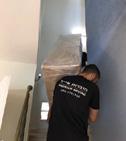



LIVE ON THE TOP OF THE WORLD! HOLYLAND (NEAR BAYIT VEGAN)
The highest penthouse in Jerusalem, 532sqm, luxurious living space + 63 sqm open terrace, breathtaking views, double underground parking + storage, high quality, perfect location. Dotan 0535888824

BRAND-NEW PENTHOUSE
NEAR BAYIT VAGAN & MT. HERZL
In a new tower by the light rail, 245 sqm, spaciously divided into 5-rooms, beautiful open terrace with deck & jacuzzi, magnificent panoramic views. High-end design, appliances & fixtures. Private parking spaces, speed elevators (Shabbat) shops & services at base of building, near quality synagogues & schools, medical centers, playgrounds, green parks and nearby nature, easy access to all parts of city and to TLV, Exclusive! Dotan 053-5888824

A RARE & UNIQUE PROPERTY IN NAHALAOT
2 room apartment + large courtyard (exclusive use), private entrance, easy access by car, near public transportation, Mahane Yehuda market, Sacher Park, Gerard Becher visual arts campus. Expansion potential (+ future urban renewal). Immediatekeys with Anglo-Saxon. Exclusive! Ze'ev 0535212207
IN THE CITY CENTER – BEZALEL ST
Near Bezalel Art School, beautiful 2-room apartment, quiet & attractive, 2 private entrances, sukkah balcony. Near cultural centers, cafes, shops, Exclusive! Liora 055-4311969
3 Moshe Hess St., Jerusalem 0778038511
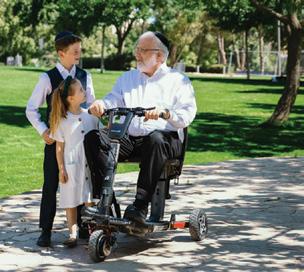
SHABBATTO scooter offers a "Mehudar" Zomet-approved Shabbat mechanism that operates according to the "Existing Current Modulation" principle. The Shabbat mechanism is pre-installed and does not require expensive fitting.


Ready to go in 10 seconds. Folds and splits into 2 lightweight parts
For a FREE DEMO Call 077-9562833
For more information, visit our website at: movinglife.co.il/torah24

RABBI AARON GOLDSCHEIDER EDITOR, TORAH TIDBITS RAV, THE JERUSALEM SHUL BAKA, JERUSALEM
Editor, Torah Tidbits
With only a two weeks until the celebration of Pesach be’ezrat Hashem, we devote the divrei Torah in this column to insights from Rav Kook regarding Pesach and the Haggadah. Perhaps some of the insights will resonate with you and you can share them at your Seder or during the meals of Yom Tov and Chol Hamoed.
“THIS NIGHT WE ARE ALL RECLINING”
What is the spiritual meaning behind the practice of reclining at the Seder?
Rav Kook suggested that the posture of reclining represents rootedness, security and the feeling of being at ease. There is nothing more frightening to a person than feeling uprooted and displaced.
under our feet”, the Torah and mitzvot have been a bedrock for us. They have guarded and solidified our existence.
With the remarkable return of the Jewish people to her Land we are beginning to heal from our long and tortuous sojourn. Reclining at the Seder is an exquisite symbol to the Jew of a renewed health and the wellness of the nation. Security and strength for our people that has been virtually an unattainable dream for almost two thousand years, is indeed now within reach.
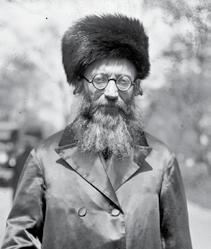
The terrible misfortune of the Jew for endless generations in exile has meant that we have wandered and have been strangers in strange lands. How then have we been able to endure the acute strain and disorientation of exile?
Although we as a people have lived in a painful state of vulnerability, without “soil
On the night of the Seder when all of Israel is reclining we celebrate the two decisive ingredients which provide stability and strength - Torah and the Holy Land. Indeed, these two components are indispensable to ensuring the perpetuation and spiritual prosperity of Am Yisrael. (Ma’amarei Ra’aya pp. 161-162)
- ‘THE WISE
What is it precisely that the child, known as the chacham (‘the wise child’) is asking when he questions the numerous commandments and obligations that are required at the Seder? In addition, how are we to understand
the intent of the answer which is stated in the Haggadah regarding the practice of eating the afikoman as the final taste of the night?
Rav Kook suggested that the wise or learned child is astonished at the endless details and minutiae that the halacha requires. Do we not run the risk of losing the meaning and spiritual import of the law when we overemphasize the halachic technicalities?
It is noteworthy that we answer the Chacham by citing another example of a seemingly minute detail in halacha concerning the rituals of the Seder (i.e. that additional food should not be eaten after the final taste of the Akikoman).
Rav Kook explains that we are reinforcing the idea that indeed the details are essential because it is precisely through studying the specifics and the nuances in the law that one comes to fully cognize the true scope of every mitzvah. In this way one develops a deep bond with the Torah and with Hashem. We especially mention the law of eating matzah and that its taste should be lasting on one’s lips because that is precisely the goal of studying and observing mitzvot. Its impact should be lasting. Just like the matzah on Pesach, we desire that the spirit of every mitzvah we perform remains with us as long as possible. This is accomplished not through soaring spiritual encounters alone but through serious involvement in study and in penetrating the remarkably detailed depth of the halacha. (Olat Reiyah, vol. 2, p.275)
There is an unusual formula used in the format of the Haggadah. It is spelled out at the end of Tractate Pesachim (116a), where it states, “Matchil b’gnut u’mesayem b’shevach - “We start with our disgrace and conclude
with our praise.” There is a further argument between Rav and Shmuel whether the disgrace consists of “initially our forefathers were idolaters” (i.e.Terach,the father of Avraham), or the disgrace refers to the fact that we were lowly slaves to Pharaoh in Egypt.
The obvious question is: Why on the night of Seder, when we celebrate the salvation of the Jewish people, do we first highlight our disgraceful beginnings?
Perhaps, one basic answer is that in order to really appreciate something, one needs to see the contrast. We remember our disgraceful beginnings because it helps to enhance our gratitude.
Rav Kook suggested another insight. He said that the remarkable quality of the Jew is that we are determined to learn lessons and perhaps even find positivity in our lowly past, from our challenges, and even our suffering.
Thus, on Seder night we examine our people’s experience of being slaves and how it teaches us to enhance our service to Hashem. The slaves in Egypt were forced to live a life of surrender and submission. This posture can be adopted in a healthy way in one’s service of Hashem.
Secondly, Rav Kook suggested that we have channeled and elevated their “disgraceful way of life as idol worshippers” by adapting some of the fervor and passion often found in pagan worship to Judaism’s more cerebral and rigid form of religious practice.
The distinctive formula that is adopted in the Haggadah of “starting with disgrace and concluding with praise” actually suggests a profound notion about how every person is to unearth favorable lessons, sparks of light, even from our experiences of suffering and pain. We are meant to utilize past
challenges in life for personal growth and development. Rav Kook contends that we as people could never have reached the heights that we have attained without transforming the ‘disgraces’ and hardships that we endured by transmuting them to uplift and empower us as a nation. (Haggadah Olat Re’iyah, pp. 24-25)

Rabbi Goldscheider’s most recent OU Press Publication, “Torah United” on the weekly Parsha, can be ordered directly from Rabbi Goldscheider at aarong@ouisrael.org at a special price for Torah Tidbits readers.
Tzitzit tying with Ruti Beit Knesset HaNassi, 24 Ussishkin no experience needed
Mondays 1:15-4pm Wednesdays 12-3pm
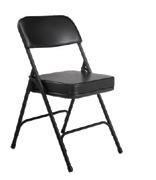


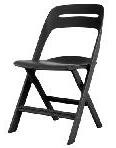






Great new rental on Mekor Haim
Large 3 bed, 2 full bath 120 Sqm
2 Balconies (1-Succa)
Shabbat elevator
Private parking & storage
Floor heating & central A/C
Immediate occupancy
Price: 12,000 NIS per month


3 Bedrooms, 2 full baths
Central A/C + heat Balcony
Shabbat elevator
Fully furnished & equipped
2 Parking Storage
Price: 13,900 NIS per month
3 Bedrooms, 100 sqm
Balcony + 100 sqm private garden
Parking
Separate rental unit Right next to: Famous Shtiblach, San-Simon park
Price: upon request


P e n t h o u s e i n E f r a t
4 bedrooms, 2.5 bath 136 sqm
2 large terraces with great views
Shabbat elevator
Private parking ,Storage
Excellent location
Price: 3,700,000 NIS

Gabi@yykrealestate.com G a r d e n a p t i n O l d - K a t a m o n
Great opportunity in Givat Mordechai
4 Bedrooms 105 Sqm In good condition
Shabbat elevator (2) 2nd floor Storage
Option for Pinui/Binui
Price: 3,150,000 NIS
Yitzchak: 054-766-0338
Gabi: 053-220-9640
Yitzchak@yykrealestate.com
www.yykrealestate.com




RAV DANIEL MANN
Rav Daniel Mann
Question: I think I lost “air pods” on an Israeli bus, so I went to their lost and found to try to find them. They showed me a stash of dozens of them, but I did not find mine. They offered me to take an equivalent set, which is their policy because there are enough to go around for everyone who lost and comes for them. May I take someone else’s lost air pods?
Answer: While it is not simple to apply the gemara’s rules on when one is required to do hashavat aveida (returning lost objects, =hshav) to modern cases, it appears the Jewish bus company is obligated. Between the brand of air pods, the bus (or possibilities of buses) it was left on, and the date, there is enough of a siman. Presumably, a clear majority of air pods in the stash were lost quite a while ago, and if their owners did not come to claim them yet, most of them are after yei’ush. This alone does not erase the bus company’s obligation to return them because yei’ush must precede the finder’s taking them (Bava Metzia 21b). However, Tosafot (Bava Kama 66a) posits that yei’ush has taken hold, just
that the finder cannot remove the existing obligation of hshav. According to the simple understanding of Tosafot, that obligation is not transferred to you if you received them after yei’ush (see Kehillot Yaakov, Bava Metzia 25). While you should not facilitate the company’s abrogation of hshav, it should suffice for you if they have legitimate grounds (see below) to believe they have done all they need to.
However, there is another approach to the matter of yei’ush after the finder finds it. The Ramban (to ibid. 26a) and Ritva (to ibid. 21b) explain that the obligation of hshav makes the finder a shomer for the loser. Consequently, the object is considered in the loser’s possession, in which case we say that yei’ush has no impact. Accordingly, the yei’ush will not help regarding you either. Without bringing further analysis (see K’tzot Hachoshen 259:1; Imrei Moshe 37), it is difficult to justify taking the air pods based on the standard rules of yei’ush. We now look for other ideas.
We have discussed (see Living the Halachic Process III, I-12 & IV, I-4) that operators of venues who are concerned about being overburdened with lost objects can stipulate to those who frequent them
Eretz Hemdah, the Institute for Advanced Jewish Studies, Jerusalem, is headed by Rav Yosef Carmel and Rav Moshe Ehrenreich, founded by Rav Shaul Yisraeli, zt”l, to prepare rabbanim and dayanim to serve the National Religious community in the Israel and abroad. Ask the Rabbi is a joint venture of the OU, Eretz Hemdah, and OU Israel’s Torah Tidbits. how long they will hold onto them. This probably works based on mechila (relinquishing) of the right to hshav. It is proper to stipulate in an explicit manner so the losers will accept the provision. However, it is plausible that those who use a large transportation system realize that they have lost and found policies and implicitly accept them.
This idea is augmented by other plausible grounds for leniency. While one is expected to exert himself to do hshav, he is not required to outlay money that will not be returned for it (Shulchan Aruch, Choshen Mishpat 265:1). Large bus companies often provide lost and found services that cost money (labor and space) as part of their customer service, and it is likely they are not required to do so (at least, for free). Therefore, if they agree to do so voluntarily, they should be able to set their own reasonable policies, even if their policy would not be halachically valid if they were fully obligated in hshav.
Finally, the idea of allowing people to essentially swap air pods (you can take Reuven’s and if Revuen asks for his, he can take Shimon’s) could possibly conform with the halacha for a case where it is not feasible or required (based on sheer volume) for the company to keep lost items forever. In some cases, it is permitted for the finder to sell the object and be prepared to give the proceeds to the loser (Shulchan Aruch, CM 267:23-25). While the policy you describe is different from that halacha, it seems





primarily equivalent (i.e., there is a plan by which the loser will be compensated, likely to his satisfaction).
Therefore, for a combination of the grounds mentioned, we can justify the company’s policy as a win-win situation for almost all and allow you to take someone else’s lost object.


Last time we discussed the case of the child born after a tragic mix-up in an Israeli fertility clinic, in which a couple received the wrong embryo. After the baby was born, named Sofia by her birth mother and her husband, and lived with them for two years, the court decided that she must be given to her genetic parents.
Some would say that she must be returned to her genetic parents, implying that she was taken from them and must be returned. While it is completely true that without her genetic parents Sofia would not have been conceived, if it were reliant solely on her genetic parents she would never have been born. A fertilized egg cannot become life without being nourished and nurtured in the uterus. We could claim that the genetic parents were never the actual parents of Sofia.
The court decision did not include any reference to Jewish law, despite the legal obligation to do so. So, what does the halacha say on this matter?
In the past, we have discussed the different opinions regarding the halachic definition of motherhood. There are Poskim who see the genetic mother as the halachic mother. A possible source for this can be found in a famous passage; the Gemara (Niddah 31a)
tells us that there are three partners in the creation of man – his father, mother and the Almighty.
What is less well known is the continuation of the Talmud; each partner provides something. The father gives the “white stuff” from which comes the bones, the skin, the whites of the eye and various other parts of the body. The mother gives the “red stuff” from which comes the flesh, the pupil of the eye, hair and various other parts of the body, and the Almighty gives the soul.
While we do not currently believe that the division of male and female contribution is distributed exactly as the Talmud describes, it does appear that the mother is the person who gives “genetic material”. This suggests that the genetic mother is the mother, and this concurs with the recent court decision.
However, there are other opinions that consider the birth mother as the halachic mother. One rationale for this is what Rabbi Aryeh Katz, in his book Shaagat Cohen, calls “the Principle of Simplicity”. If we have a simple explanation of a phenomena the halacha will follow this and not seek other, more complicated explanations. If the woman delivered the baby it is intuitive and obvious to view her as the mother.
More on this next week.

Yesterday was a day of chaos in Jerusalem. The roads were blocked due to protests, the buses weren’t moving, and getting home felt impossible. I thought about walking, but my bags were heavy, and the distance was long. So I got on a bus, figuring at least I’d be warm.
The bus was packed, mostly with older people who didn’t quite understand what was happening. Tension filled the air. At one point, an older woman, overwhelmed by the situation, started shouting in frustration.
A 16-year-old girl sitting nearby gently said to her, “It’s okay, we all feel the same way, but take a deep breath. I’ll get you some water, everything will be alright.” The woman didn’t calm down, but the girl’s kindness stood out like a bright light in the heavy atmosphere.
Time passed—more than an hour of being stuck in place. The same woman, now at her limit, burst out again:
“I can’t take this anymore! What kind of country is this? What kind of people?!” And then, almost in the same breath, she sighed, “And I’m hungry! I haven’t eaten all day!”
A young Haredi woman was sitting behind her. She too was stressed, because she was trying to get home to her four-monthold baby who needed to nurse. She leaned forward and asked the older woman:
“What do you like to eat?”
“Pizza, with mushrooms,” the woman answered.
Without hesitation, the young woman got up. “I’m getting off the bus to get you pizza.”
She left her bags on the bus and disappeared into the cold. The 16-year-old girl with slits-at-the-knee jeans followed her as she set out on her mission.
A few minutes later, they were back — not just with pizza for the hungry woman, but with two whole pies, bottles of water, and extra food for whoever needed. The Haredi woman didn’t just give food to the
woman who had been complaining — she walked through the bus, offering food to everyone.
After the older woman was satiated, she blessed everyone on the bus and called out to the Arab driver:
“Driver, you will never forget today! You will never forget what wonderful people you had on your bus as you sat in traffic in Jerusalem!”
Many people offered to pay the Haredi woman for their pizza and drink. She refused. She only asked to pray for her son Yehuda ben Shani for a speedy recovery. I told her that I would spread the word….
At a time when everything feels so divided, when frustration boils over so easily, this moment was a reminder: The people of Israel are alive. Not just alive—but deeply, beautifully connected! יח לארשי םע!
By Sara Berelowitz Comptroller, Human Resources, OU Israel

In the photo: The 16-year-old girl distributing food to hungry passengers on a bus stuck in traffic in Jerusalem. (The young Haredi woman who bought the food for her fellow passengers did not want to be photographed.)
Shabbat Shalom and may Yehuda ben Shani have a speedy recovery in the merit of our prayers and his mother’s kindness. #onlyinisrael

Don't let Hebrew get in your way, get your tasks done TODAY!
TRANSLATION STATION
Our dedicated NBN staff offer one-onone assistance to help you navigate and understand any challenging Hebrew task.
Tuesdays, 10AM-2PM @NBN JLM Aliyah Campus
www.nbn.org.il/translation-station

in Tel Aviv


Join us for a delightful food and crafts festival and support Olim businesses! SHUK OLIM TLV
Monday, May 5th, 2025 | 17:00-21:00 @NBN TLV Center at Azrieli
www.nbn.org.il/shuk-olim










Nefesh B’Nefesh’s Guided Aliyah program enables US and Canadian citizens, currently residing in Israel, the opportunity to make Aliyah through the Population and Immigration Authority, while receiving the full array of Nefesh B’Nefesh services.
www.nbn.org.il/aliyah-from-within-israel





The calendar includes all Nefesh B’Nefesh events that take place in Israel, as well as approved third-party in-person and virtual events. The Israel Calendar gives Englishspeaking Olim easy access to relevant online and in-person programming.
www.nbn.org.il/israel-calendar

connections happen.
Dating can feel like a solo journey—but what if it didn’t have to be? What if, instead of searching alone, you were part of a warm, welcoming group of like-minded people, all at the same stage of life, all committed to finding something real?
That’s exactly why OU Israel and Shagririm Balev are launching an exclusive group of marriage-minded singles for Anglos and Olim ages 30-45 - a unique opportunity to connect with quality people in a relaxed, uplifting environment. This is especially valuable for Olim, who can benefit from having a larger network and a “big family” in their new community. Through engaging sessions, meaningful discussions, and a transformative Shabbaton, this isn’t just about meeting someone - it’s about building friendships, feeling supported, and being part of a community that truly understands you.
There’s something powerful about being surrounded by people who share your values and stage of life. The conversations flow easier. The laughs come naturally. The whole experience feels less like “dating” and more like just being yourself—and that’s when real
But this group isn’t just about finding your match. It’s about shifting the way we think about matchmaking altogether. We’ve seen time and time again that some of the best matches don’t happen from an app or a resume—they happen when people look beyond themselves, take an interest in others, and set each other up for success.
Participants in a group like this don’t just focus on their own dating prospects; they start seeing the bigger picture. They notice when two people in the group might click. They think of a friend outside the group who could be a perfect match for someone they’ve met. And most importantly, they become invested in each other’s success. It’s not just about who they meet, it’s about how they show up for one another.
In a world where we often chase individual success, true connection comes from sharing our journeys with others. We don’t have to do it all alone. In seeking “the one,” we uncover the beauty of belonging—not just with a partner, but within a group of people who truly see us and support our growth.
KNOW SOMEONE WHO SHOULD BE HERE?
If you or someone you know is kind, serious, and truly ready for love, this is the kind of experience that can make all the difference. To learn more, contact Shira at: +972 58 432 3218.
Because sometimes, the best matchmakers aren’t professionals. They’re the people standing right next to you.



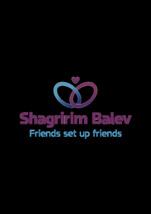
WE ARE LAUNCHING AN INCREDIBLE PROGRAM WITH HIGH QUALITY EVENTS FOR AN EXCLUSIVE GROUP OF ENGLISH SPEAKING SINGLES AGES 30-45. THERE WILL BE WORKSHOPS, LECTURES, A SHABBATON AND MORE. ACCEPTANCE AFTER AN INTERVIEW INTERESTED? SCAN THE QR! A N A N E X C L U S I V E E X C L U S I V E

P R O G R A M P R O G R A M F O R F O R M A R R I A G E M A R R I A G E M I N D E D M I N D E D S I N G L E S S I N G L E S
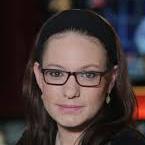

BY SIVAN RAHAV-MEIR
BY SIVAN RAHAV-MEIR
Vaya’as is a word that recurs in the last few Torah portions. The Jewish people are asked to act, to contribute, to build the Mishkan.
Much excitement has surrounded Emunah Cohen and Neta Lax, the two fresh winners of the annual International Bible Quiz. Yesterday I interviewed them and heard their story.
the first time?' Yet I simply forgot it. I thought afterwards that HaShem caused me to forget the answer in order to remind me that I do not know everything, that I am human and not perfect."
the first time?' Yet I simply forgot it. I thought afterwards that HaShem caused me to forget the answer in order to remind me that I do not know everything, that I am human and not perfect."
Much excitement has surrounded Emunah Cohen and Neta Lax, the two fresh winners of the annual International Bible Quiz. Yesterday I interviewed them and heard their story.
It turns out that they studied long hours together and were confident they would be the leading competitors. "We planned on winning together," Emunah revealed. "We thought both of us would answer every question correctly so that we would both be champions, tied for first place.
We also have an example of “Vaya’as” among us now: This week, I spoke with high school student Eitan Cohen. His principal was Yossi Herschkowitz, who was killed while fighting in Gaza on Nov. 10, 2023. Just before the Oct. 7 massacre, Yossi had left them a mission.
"The more you learn," Neta said, "the easier it gets. When you learn a lot of Tanach (Bible) you simply see how everything connects to your life. I truly felt that what I learned accompanied me wherever I went. It made my heart feel good."
"The more you learn," Neta said, "the easier it gets. When you learn a lot of Tanach (Bible) you simply see how everything connects to your life. I truly felt that what I learned accompanied me wherever I went. It made my heart feel good."
In closing, Neta declared: "The two of us will continue to study the Tanach. There were parts of the Tanach that were not in the material covered by the quiz, and it's important for us to learn them too."
“Following the conflict surrounding Yom
It turns out that they studied long hours together and were confident they would be the leading competitors. "We planned on winning together," Emunah revealed.
But in the end Emunah won. "They made a big deal about our big hug after I lost," Neta said. "But it was the easiest thing to share in her happiness. Besides, we were just relieved that the competition was finally over."
In the course of the entire contest, Emunah made only one error. "I knew the answer to the question: 'When did King David cry for

And Emunah had this recommendation: "Study the Bible for 5 minutes every day. Not for school, not for the Bible quiz, but just for how much fun it will be."
In closing, Neta declared: "The two of us will continue to study the Tanach. There were parts of the Tanach that were not in the material covered by the quiz, and it's important for us to learn them too."
And Emunah had this recommendation: "Study the Bible for 5 minutes every day. Not for school, not for the Bible quiz, but just for how much fun it will be."
Sivan Rahav-Meir is a media personality and lecturer. Married to Yedidya, the mother of five. Lives in Jerusalem, and formerly served as the World Mizrachi Shlicha to North America. Sivan lectures in Israel and overseas about the media, Judaism, Zionism and new media. She was voted by Globes newspaper as most popular female media personality in Israel and by the Jerusalem Post as one of the 50 most influential Jews in the world.
Sivan Rahav-Meir is a media personality and lecturer. Married to Yedidya, the mother of five. Lives in Jerusalem, and formerly served as the World Mizrachi Shlicha to North America. Sivan lectures in Israel and overseas about the media, Judaism, Zionism and new media. She was voted by Globes newspaper as most popular female media personality in Israel and by the Jerusalem Post as one of the 50 most influential Jews in the world.


Kippur tefillot in Tel Aviv, Yossi was devastated,” Eitan shared. “He wanted to transform the shock into action and decided on the spot that he would write a sefer Torah for the elevation of the soul of someone secular, someone who was seemingly ‘from the other side.’ He approached the family of Chen Amir, a commando killed in an attack in Tel Aviv, and informed them that he would be donating a sefer Torah to them. He also told his wife Hadas and several other people that they needed to start collecting bottles, hundreds of thousands of bottles for recycling, to raise money for this cause.” The students heard about Yossi’s initiative during the mourning period and began collecting bottles. They also took on several other projects to raise the funds and together reached the required sum – about NIS 70,000. The sefer Torah is not new; it was damaged in the Holocaust and has now been restored. The students were amazed to discover where Chen Amir lived: Kibbutz Re’im. Yossi had contacted the family even before Simchat Torah, but afterward, the kibbutz became a symbol. “This week, we heard sounds of strife that almost took us back to that Yom Kippur,” they told me. “And precisely this week, we sent invitations for the festive hachnasat sefer Torah to be held next week. The souls of Yossi, Chen, and all of us are connected. There is nothing like a sefer Torah scroll from
the Holocaust that will now be dedicated to Kibbutz Re’im to remind us of this.”
Sivan Rahav-Meir is a media personality and lecturer. Married to Yedidya, the mother of five. Lives in Jerusalem, and formerly served as the World Mizrachi Shlicha to North America. Sivan lectures in Israel and overseas about the media, Judaism, Zionism and new media. She was voted by Globes newspaper as most popular female media personality in Israel and by the Jerusalem Post as one of the 50 most influential Jews in the world.





TZVI
WOHLGELERNTER
Rabbi of Kehillat JLIC of Givat Shmuel, Director of JLIC Semicha Program in partnership with the Virtual Halacha Program and the Machon HaGvoha L’Torah of Bar Ilan.
Learn more at: oujlic.org/semicha
There are many halachot concerning food preparation on Shabbat especially when it comes to heating up the food on Shabbat itself, lest one transgress the prohibition of cooking. However, there are also laws about heating up food before shabbat even begins. One of these rabbinic laws is the decree regarding shehiya whether food can be left on a fire going into shabbat. The Gemara (Shabbat 36b) brings a disagreement between Chananya and the Chachamim. According to Chananya food that is at least maachal bein derusai (either a 1/3 or ½ cooked) can be left on an open fire going into Shabbat. The chachamim argue and hold that only food that is fully cooked can be left on an open fire. In terms of the practical halacha the Rosh )א
comment:
Due to the fact that the Jewish people cling to the mitzva of oneg Shabbat, they can rely on the lenient opinion of Chananya.
This statement by the Rosh is confusing as it is unclear what the Rosh’s true feelings towards this law are. One understanding is that the Rosh believes that ideally, we should be strict like the opinion of the chachamim, but no one will listen, so better to allow people to be lenient like Chanaya. This is the interpretation of the Biur Halacha )וגהנו
. On the other hand, the Hazon
’לה( has the opposite understanding. He interprets the Rosh as claiming that although great luminaries were strict, due to the fact that this may get in the way of Oneg Shabbat, many Jews did not listen to those opinions and instead gave primacy to the lenient opinion. The practical application that derives from this later dispute over how to interpret the Rosh, is whether one should l’chatchila be stringent or not. According to the Biur Halacha one should strive to practice like the opinion of the chachamim and only leave food on an open flame if it is already fully
cooked (and cooking it more will dry it out). However, according to the Hazon Ish, there is no need to be strict and one can continue to be lenient and leave food that is already half cooked on an open flame. Regardless of however one determines the practical law in this dispute, there is a vital message as to how we should approach Shabbat observance. The sanctity of Shabbat must be guarded. However, the entire focus of Shabbat should not be limited to what we cannot due, rather the guardrails are there in order to allow us to properly experience shabbat in the right way. The Shabbat is meant for us to enjoy and benefit from both spiritually and physically. It is only through this balance of shamor and zachor that we nurture the Shabbat we are meant to experience.
JLIC’s mission is to create a movement of vibrant Jewish life among emerging adults aged 18 to 30 through transformative leadership development, innovative educational programming, and meaningful engagement opportunities. We empower the next generation of leaders who will inspire and strengthen the Jewish community worldwide. In Israel, JLIC is creating and nurturing vibrant religious communities in Israel to support English-speaking college students and young professionals, and is currently active in 10 communities. To learn more, visit us at oujlic.org/Israel
Gems, Precious Stones,
Carvings,
Alan Sussman, “The Collector” *** 052-854-4504 Please call live, Text message or WhatsApp
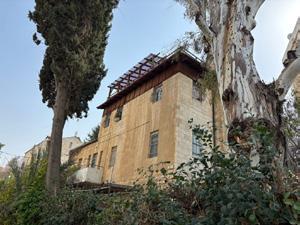
A unique property with great potential!! An entire floor (middle floor) with four directions of light and air . 119 sqm plus a separate unit on the ground floor. A privately registered garden of 173 sqm, 30 sqm of balconies and additional building rights of 71 sqm.

I Am In New York & New Jersey March 24-30
Call For Your Personal Private Meeting **
Netanya- Close To Ir Yamim - Limited Time Offer
Select 2, 3, 4, Bedroom Apartments Completing June 2027
Great Pricing with NO INDEX + ONLY 10% At Closing
Builder Offering 1M NIS mortgage - 20 years - 2.49%
Balance + 1st mortgage payment at Keys
Jerusalem:
Talpiot New - 2 Bedrooms - 2.85M NIS*
Talpiot New - 3 Bedrooms - 3.58M NIS*
Arnona New - 2 Bedrooms - 3.4M NIS*
Arnona New - 4 Bedrooms - 4.7M NIS*
Haifa : New Project - Close To Beach / Sea
New - 2 Bedrooms - Starting From 2.2M NIS / $603K USD
New - 3 Bedrooms - Starting From 2.64M NIS / $724K USD
New - 4 Bedrooms - Starting From 3.003M NIS / $823K USD
Rehovot:
4 Bedrooms - Close to Berman Shul - 3.2M NIS
4 Bedrooms + Roof rights - Near Berman & Weizmann - 2.8M


EFRAT - LUXURY VILLAS - NEW DEVELOPMENT
Upscale duplexes and triplexes - elevator included
Smart home systems, underfloor heating, upscale kitchens

RAMAT POLEG
2 parking spots, huge gardens, some homes w/ private pools
3 bedrooms 3 Bathrooms, Great Sea View, 6th floor
Shabbat Elevator , 100sqm - 4.03M NIS
Tel Aviv : NEW
Ben Yehuda St - 3 Bedrooms From 5 9M NIS*
Yarkon Park - 2 Bedrooms From 4.99M NIS*
Jabotinsky St. - 3 Bedrooms - From 4.99M NIS*
Nahariya: NEW Hi-Rise PROJECT - LAST UNITS
4 Bedrooms - From 1.92M NIS*
Nahariya : Boutique Building - Quiet Street
100 meters to Beach - Finishing in 1 year
4 Bedrooms - 2.95M NIS / $832k USD We Offer Free Home Inspections**


You, along with retirees may be Social Secur
Join us for our F the repeal of Elimination
Social Security With Expert Sp April 3r 7 PM
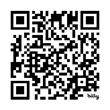


STRESS FREE PESACH STRESS FREE PESACH


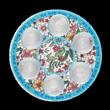

Use Code TIDBITS for FREE SHIPPING



DANIELLA ORENBUCH & ELI SCHWARTZ
This week we conclude Sefer Shemot, where Bnei Yisrael transforms from slaves in Egypt to a free nation. Parshat Pekudei, the last parsha in the sefer, accounts for all the Terumah (contributions) given to the Mishkan (Tabernacle). The word “Pekudai” translates to account for, and reflects the precision and effort that went into building the Mishkan.
After the Mishkan is built, why do we need to go back and account for all the contributions? Together, we discussed three possibilities and how they are applicable to our lives today.
Let’s paint the picture. We just built our new home and we want to make sure that it is functional and works for us. We are careful to inspect the house to make sure everything is safe. We go over and fix any problems that could have been missed. Going forward the home requires constant maintenance. Building a home is a big deal, and we want our home to be a place where we can dwell and thrive.
So too, with the Mishkan, Hashem’s home,


we must be precise and make sure it is fit for His divine presence to dwell. Being the messenger to build a place for Hashem to live is a big responsibility. When we get big important tasks, it is crucial for us to review and reflect, in order to perfect. Bnei Yisrael learn the skills to responsibly and intentionally allocate precious resources. Here we can learn the importance of responsibility on both a personal and communal level.
Q: What is something precious to you that you take good care of?
Eli: I take care of my belongings, like my bed, clothes and shoes. I want to make sure my belongings are well maintained. I also look out for my friends to make sure they are ok. Q: Give me an example of when you needed to be responsible.
Eli: One time I helped out my friend who was lost. I saw he needed help and walked him to his correct bus. Even though it didn’t take too much time from my day, it might have helped my friend’s day, and saved him lots of time and energy. And those small actions can make a big impact.
Q: Was there ever a time you were responsible for someone or something other than yourself? Eli: Once my best friend Binyamin and I found a RavKav. We knew it belonged to someone and had money on it. So we did the proper thing. We brought it to the central station and got it to its owner.
Parshat Pekudei is also a bridge into Bnei Yisrael starting their active service in the Mishkan. Serving Hashem isn’t going to be
a passive task for Bnei Yisrael. In fact, it is a much bigger task than building the Mishkan itself. Accounting for all the efforts Bnei Yisrael contributed builds excitement as they prepare to transition into a higher spiritual state. We learn here we should invest, and be excited about serving Hashem, and even create a Mishkan within ourselves,
יבבלב ןכַּשמ הנבא. From this we learn to approach our spiritual lives with excitement, thoughtfulness and commitment.
Q: What is something you worked hard on that you were excited about?
Eli: Sometimes when shopping I like to look for a good sale. I don’t just buy the first thing I see. Finding something I like and at a good price where I save money makes me happy. Also saving money I’ve worked hard for feels good.
Q: Is there something you do to feel connected with Hashem?
Eli: When I Daven, and when I work on being the best version of myself. I also connect to Chanukah. I love the meaning of the holiday and the singing. And most of all, being on a Yachad Shabbaton. It is the most spiritual for me.
Finally, accounting for all the materials and contributions expresses the Torahs appreciation for every individual who donated. It didn’t matter if your contribution was big or small, because nothing fell through the cracks, and everyone got proper recognition. It was a proud moment for Bnei Yisrael to see how their efforts came together into one cohesive masterpiece. Accounting for everything made everyone feel appreciated and empowered. We can learn how it is important for one to recognize that his very own actions, big or small, make an impact, for good or

077-2050015 052-2678749
golanechasim@gmail.com
Meir Golan
Old Katamon: 4-room apartment in a small and quiet street, 101 sqm, renovated, very bright and airy, master bedroom, Safe room (mamad), sukkah balcony, view, elevator, 3,400,000 NIS

Meir Golan
RASCO: new 4 room apartment, 95m, master suite, elevator, balcony, very nice view 2,950,000 NIS
ARNONA: 5-room apartment, 115m, master suite, balcony, Shabbat elevator, full accessibility, storage, private parking, 4,000,000 NIS
Old Katamon: 4-room apartment, 90 sqm, well split, bright, airy, sukkah balcony facing a magnificent panoramic view, 3 exp Shabbat elevator, parking, 3,290,000 NIS
ARNONA: 4-room apartment, 90m, beautifully renovated, master suite, balcony, storage, Shabbat elevator, private parking 3,250,000 NIS
Old Katamon: Spacious 3-room apartment in a very quiet street, 75 sqm, sukkah balcony facing a green and pastoral view, 3 exp. Shabbat elevator, private parking, storeroom, 2,690,000 NIS
BAKA: New 4 room apartment, 88m, very high ceilings, master suite, Shabbat elevator, full accessibility, balcony, 4,350,000 NIS
BAKA: New 4 room apartment in a new building, 88m, master suite, storage, Shabbat elevator, private parking, 3,950,000 NIS
KIRYAT SHMUEL: 4 room apartment, 110m, Sukka balcony, nice view, Shabbat elevator, full accessibility, storage, parking 5,500,000 NIS
ARNONA: New 6 room penthouse, 155m, 55m terrace, nice view, Shabbat elevator, full accessibility, 2 parking spaces, storage, 5,300,000 NIS
RECHAVIA: 4-room apartment, 92m, Suka balcony, Shabbat elevator, fully accessible, private parking, storage 4,400,000 NIS
ARNONA: 5-room apartment, 120m, balcony, elevator, fully accessible, private parking, storage 4,350,000 NIS
BAKA: 5-room garden apartment, 140m, master suite private parking, storage, full of light, nice garden, 6,000,000 NIS
OLD KATAMON: 4-room garden apartment, 96m, large garden, additional rental unit, very bright, parking, 6,800,000 NIS
MEKOR CHAIM: 4 room apartment, 96m, Sukka balcony, Shabbat elevator, full accessibility, private parking, storage 4,400,000 NIS
OLD KATAMON: Spacious new 5-room apartment, 140m, terrace, underfloor heating, Shabbat elevator, 2 parking, 6,300,000 NIS
TALBIYA: 5 room apartment, 290m, 5 balconies (Sukka), beautiful view, Shabbat elevator, full accessibility, 4 covered parking spaces, 25,000,000 NIS
FOR RENT:BAKA: nice 4-room apartment, 82m, beautifully renovated, master suite, air conditioners, balcony, second floor, elevator - fully accessible, storage, 8,000 NIS
for bad. We need to harness this power we have within us and channel it for making a positive impact.
Q: What is something or someone you have Hakarat Hatov (appreciation) for? Eli: I am grateful for many things. For being alive, my friends, my family, YACHAD, my job, and my apartment.
Q: What is something small you do everyday that has a positive effect on yourself or others? Eli: I make a positive impact in the way I treat people. I make a point to smile and talk to people I see and meet. I believe if the small things are appreciated, the next time that same person gives, they will be willing to give more.
We hope you enjoyed these insights as much as we enjoyed learning together. Chazak, Chazak, V’nitChazek!
Shabbat Shalom

OU ISRAEL FACULTY
The very last verses in our Parsha present us with an obvious difficulty. The Torah there states (40:36-38): “When the cloud lifted from above the Tabernacle, the Israelites went onward in all their journeys, but if the cloud did not lift, they did not set out until the day it lifted. For the cloud of HaShem was over the Tabernacle by day, and fire was in the cloud by night, in the sight of all the house of Israel in all their journeys.”
Rashi notes a linguistic problem with the text and offers an extraordinary resolution. As the Sifsei Chachamim (40:38) explains: There is a small but significant difference between the two instances of the phrase “bechol mas’ehem, in all their journeys.” In verse 36, the words are to be taken literally. When the cloud lifted and moved on ahead, the Israelites knew they were about to travel. However, in pasuk 38, they cannot be taken literally. The cloud was not over

the Tabernacle in all their journeys. On the contrary, it was there only when they stopped travelling and instead pitched camp; during the journeys the cloud went on ahead. To this problem, Rashi makes the following comment: “A place where they encamped is also called ‘massa, a journey’ . . . Because from the place of encampment, they always set out again on a new journey, therefore they are all called ‘journeys.’” There are two very important ways to understand Rashi’s equating a journey with an encampment. The first is presented by the Yalkut Yehuda (ad loc).
Every life contains its busy days and free days, periods of work and periods of leisure. The central question is: which is primary and key, and which is secondary and subordinate? As the saying goes: “Do we live to eat or do we eat to live?” Rashi’s remarkable insight is this: When our “encampments”our rest-stops - are seen as times to re-energize ourselves, when we pause to refresh and regain renewed strength for the next leg of our journey and ultimate destination, then those seemingly inconsequential intervals of relaxation and “down-times” are endowed with the significance of “journeys” as well.
Even though the encampments appear to be only a means to an end, when that “means” is seen and experienced as a channel, an instrumentality through which to
journey on, then those “off-times” are worthwhile and exceptional in their own right and must never be dismissed as insignificant and inferior.
Life can be lived in one of two ways. One life-outlook argues that we should work hard, amass funds, and all, so that we can retire comfortably, “kick off our shoes” and enjoy the pleasurable and earned rewards of our years of labor. The second life-outlook predicates itself upon the mandate of “For man was born to toil… “(Iyov 5:7) which our Sages understood broadly to mean that man is charged with a mission – a journey - to work and accomplish, to labor and contribute to the betterment of the world, both materially and spiritually until his last breath.
There is dignity in the work of man’s hands, and when the chief objective of all the “encampments”, all the rest-stops along the way, are intentionally meant to facilitate and advance that “journey,” then they too are distinguished and honored with the title of “journey.”
Now, the first way of living is certainly quite appealing, especially as it has no unethical downside. But while the first may lead to a life of tranquility and contentment, it is only the second that holds out the promise of greatness and distinction! If we are blessed with good health and sound mind, we dare not squander the wisdom of our years on purely self-indulgent pursuits when our greatest challenges and achievements - when our very reason for being – our raison d’être - awaits to be realized.
The second reading of Rashi’s comment is found in the writings of Rabbi Lord Jonathan Sacks.1 In this read of Rashi, Rabbi 1. See his essay “Encampments and Journeys,” Pekudei, 2008.
Sacks emphasizes the ethos of the journey as a distinct and singular existential reality of the Jew, a historical phenomenon that operates until he – and all of Israel - are privileged to arrive at their promised messianic destination.
In Rabbi Sack’s own words: “To be a Jew is to travel, and to know that here, where we are, is a mere resting place, not yet a home. It is defined not by the fact that we are here, but by the knowledge that eventually – after a day, a week, a year, a century, sometimes even a millennium – we will have to move on. Thus, the portable Tabernacle, even more than the Temple in Jerusalem, became the symbol of Jewish life.
“If anything is responsible for the unparalleled strength of Jewish identity during the long centuries in which they were scattered throughout the world, a minority everywhere, it is this – the concept to which Jews and Judaism gave the name - galut, exile. Unique among nations in the ancient or modern world, with few exceptions they neither converted to the dominant faith nor assimilated to the prevailing culture. The sole reason was that they never mistook a particular place for home, a temporary location for the ultimate destination. “Now we are here,” they said at the beginning of the Seder

service, “but next year, in the land of Israel.
“In Jewish law (Yoreh Deah 286: 22)2, one who hires a house outside Israel is obliged to affix a mezuzah only after thirty days. Until then it is not yet regarded as a dwelling-place. Only after thirty days does it become, de facto, home. In Israel, however, one who hires a house is immediately obligated “mishum yishuv Eretz Yisrael, because of the command to settle Israel.” Outside Israel Jewish life is a way, a path, a route. Even an encampment, a place of rest, is still called a journey.”
Of course, what has given the Jew the resiliency and courage to stay faithful to his mission has been his indomitable conviction that on that long and meandering exilic journey, he was never alone, that always shadowing him, accompanying and protecting him, was HaShem’s “Cloud of Glory.” As Chazal so poignantly put it: “When Israel went into exile, the Divine Presence went with them.” (Megillah 29a)
Thus, as the Book of Shemos comes to its end, the theme of “journeys” is mentioned and repeated, as, “even an encampment is called a journey.” The lesson, as Rabbi Sacks concludes, is a most powerful one. “Even when at rest, Jews knew that they would one day have to uproot their tents, dismantle the Tabernacle, and move on. A people that never stops travelling is one that never grows old or stale or complacent. It may live in the hereand-now, but it is always conscious of the distant past and the still-beckoning future.”
Indeed, a future that held out the Divine promise that, as the great prophet proclaimed: “There is hope for your future – the Word of HaShem – and your children will return to their borders.” (Yirmiyahu 31:16).
2. See Menachos 44a
Baruch HaShem, so many have returned to their Land. And for those who are still on their “journey,” the welcome mat is always out, ready and waiting!
Rabbi Jeffrey Bienenfeld served in various pulpits in the US, most recently at the Young Israel of St. Louis, before making aliyah in 2006. He currently is on the faculty at the Israel Center and gives shiurim in the Jerusalem area. Rabbi Bienenfeld can be reached at jdbnfeld@outlook.com
Walking down King George St. in Jerusalem and want a cold bottle of water?
Come help yourself to a bottle at 52 King George.
In loving memory of Yoni’s wife Tziporah a"h, a true Eishes Chayil, always full of chessed, kindness and laughter, and brought life and strength to so many people, that she touched! She was like Aron, who loved peace and pursued peace.

Yoni thanks Hashem for having the opportunity of having Tziporah in his life, to learn of her caring, patience and happiness, to overcome her challenges. May Tziporah's Neshama be a light onto the world, in a time of darkness, and may her Neshama shine to Gan Eden. Yoni misses Tziporah with tears in his eyes, as Hashem gave him a gift, a crown jewel, now he returns her to Hashem. With thanks and Toda. Love, Yoni
To help refill the supplysend tax deductible donations for Be’er Tziporah a"h Bottled Water Gemach to Chabad of RechaviaRabbi Yisroel Goldberg email Rabbi@JerusalemChabad.org 02 800-1717
www.JerusalermChabad.org/DonateShekels
HAGGADAH YOM IYYUN
SUNDAY, MARCH 30, 2025
9:15am - 2:00pm Eastern
4:15pm - 9:15pm Israel time
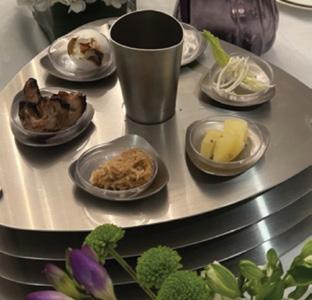
Sponsored by Je Weiss in loving memory of his parents, Benjamin and Judith Weiss, Binyamin ben Chaim z”l, v’Chaya Vitel bat Yekutiel Yehuda z”l. Yehi zichronam baruch.
FEATURING:
DR. REBECCA WINTER GOTTLEIB
RABBI ZVI GRUMET
YOETZET HALACHA
LAURIE NOVICK
RABBI DAVID SILBER
YOETZET HALACHA
STACEY NECHAMA GOLDMAN
RABBI MENACHEM LEIBTAG
FEATURING:
TAMAR WEISSMAN
YOSEF LINDELL
RABBI MOSHE SHULMAN
DR. AARON KOLLER
YOSEFA WRUBLE
RABBI ERIC GROSSMAN
RACHEL SHARANSKY DANZIGER
RABBI JAY KELMAN
MONDAY, MARCH 31 - THURSDAY APRIL 10 register at torahinmotion.org/programs
RABBI MENACHEM LEIBTAG
DR. BENI GESUNDHEIT
DR. MARTIN LOCKSHIN
RABBI ALEX ISRAEL
SARAH GORDON
RABBI ARI CHWAT-SHVAT
RABBI HAYYIM ANGEL





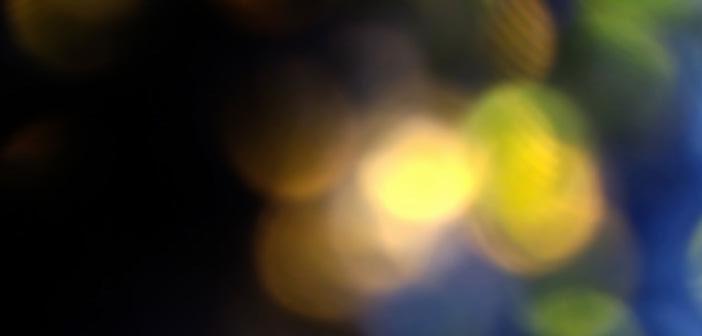













Whether you would like a fully catered Pesach or complementary dishes to add to your menu, fill up your freezer with fresh, delicious home-made food, made by a culinary chef.


JUST WANTED TO THANK YOU for the absolutely delicious food that we enjoyed over yom tov... everything was truly delicious! We especially enjoyed the chocolate brownie, schnitzel nuggets in duck sauce, aubergine dip, choc chip squares ...we had a lot of favourites! :)
A.S. Bet Shemesh
